In June 2019 I solo-travelled in Afghanistan’s Wakhan Corridor for over two weeks, hiking over high passes in the beautiful Little Pamir and meeting friendly locals everywhere I went. Here’s how I did it.
Afghanistan!? You’re crazy!
That’s the typical response I got when I mentioned to people that I was planning on visiting Afghanistan.
While most of Afganistan isn’t safe for travel, there are a handful of peaceful spots scattered throughout the country – and the Wakhan Corridor is one of them. Before my trip, I’d read stories and seen photos of the high mountain passes and nomadic peoples of this region of Afghanistan.
I had to see this other side of Afghanistan with my own eyes.
After tons of research, I pulled it off without a hitch. This post will tell you everything you need to know about visiting Afghanistan’s Wakhan Corridor, based on everything I’ve learned about the region.
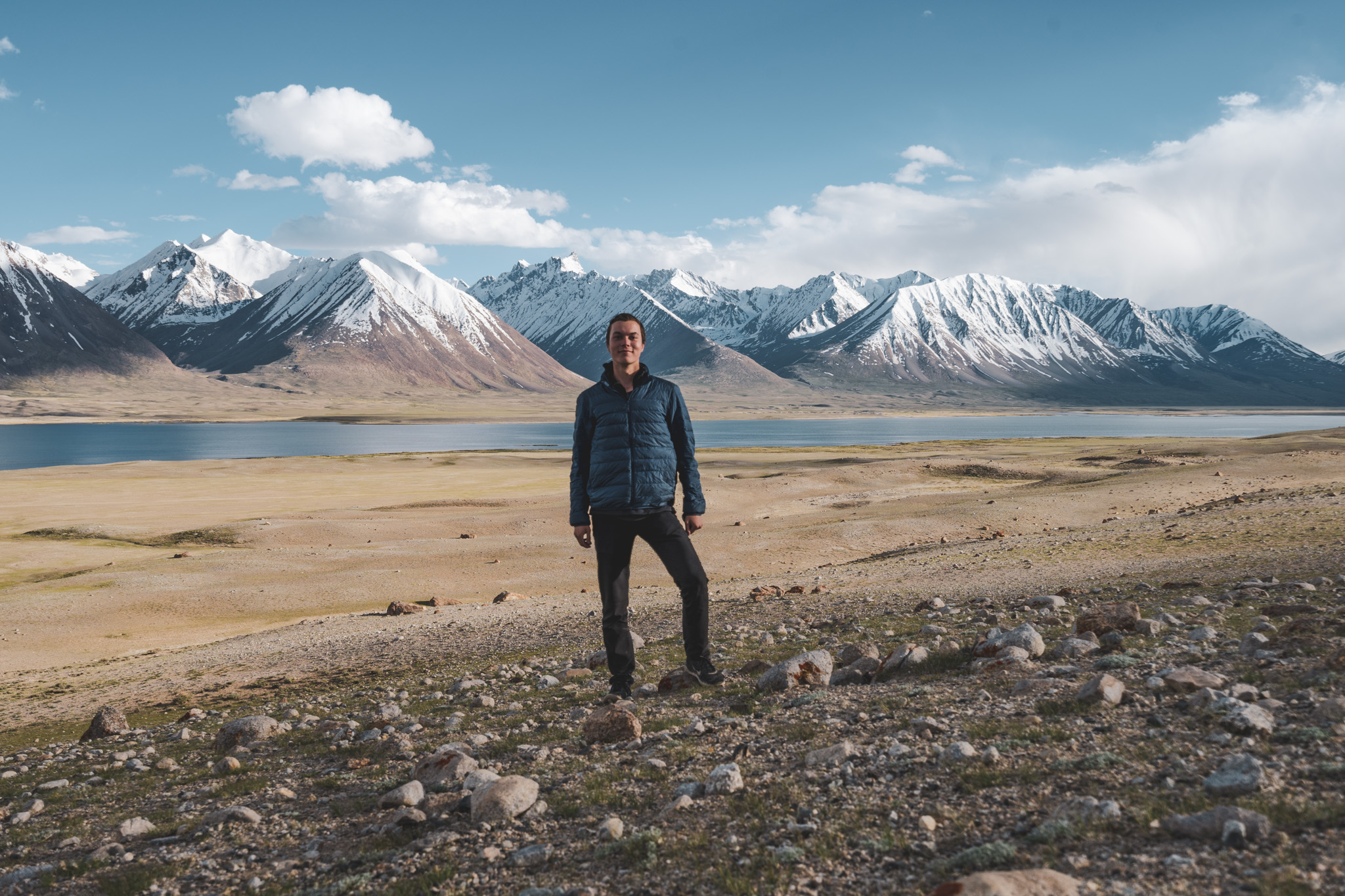
Contents
- 1 Introduction to the Wakhan Corridor
- 2 Wakhan Corridor Itineraries
- 3 Getting an Afghan Visa
- 4 Getting to/from the Wakhan Corridor
- 5 Money in the Wakhan Corridor
- 6 Transportation in the Wakhan
- 7 Accommodation in the Wakhan
- 8 Trekking in the Wakhan Corridor
- 9 Wakhan Corridor Permits & Registration
- 10 When to visit the Wakhan Corridor
- 11 Safety in the Wakhan Corridor
- 12 Internet in the Wakhan Corridor
- 13 Wakhan Corridor Budget
- 14 What to bring to the Wakhan Corridor
- 15 Languages of the Wakhan Corridor
- 16 Wakhan Corridor Tours
- 17 Books to read before you go
- 18 Other Wakhan Corridor Resources
- 19 Wrap-up
Introduction to the Wakhan Corridor
Afghanistan’s Wakhan Corridor is a long, narrow strip of land that is bordered by Tajikistan, Pakistan, and China. The corridor separates the Pamir and Karakorum mountains and is home to the source of the Amu Darya (Oxus).
The borders of the Wakhan Corridor were defined in 1893, and it was designed to act as a buffer between the British and Russian empires. The corridor is inhabited mainly by Wakhi people, although the remote Little Pamir region is home to Kyrgyz semi-nomadic people.
Historically, the corridor was used as a trade route between Afghanistan and China. It’s believed that Marco Polo even passed through here while travelling towards China. The Wakhan’s rugged passes are some of the only ones that cross the mighty Pamir mountains.
Nowadays, the Wakhan Corridor receives a few hundred foreign tourists per year. Even fewer venture deep into the corridor’s Little Pamir.
Note: There are two places named Ishkashim, one in Afghanistan and one in Tajikistan. In this post, I’ll refer to Afghan Ishkashim as “Ishkashim” and Tajik Ishkashim as “Tajik Ishkashim”. You may also see Afghan Ishkashim reffered to as “Sultan Ishkashim” in other resources on the internet.
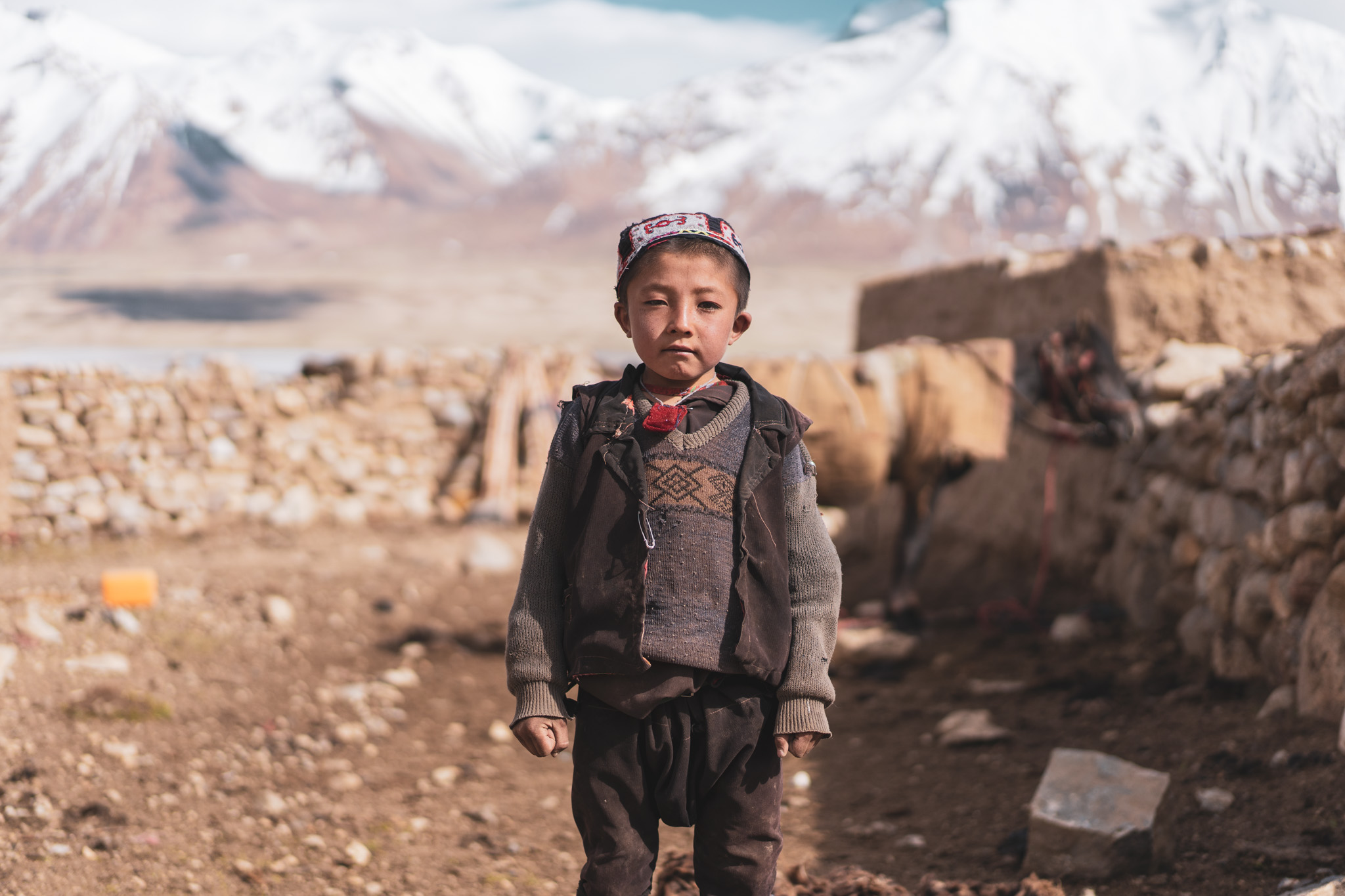
Wakhan Corridor Itineraries
Anything can happen when you’re visiting a remote area like the Wakhan Corridor. Delays due to broken cars, sickness, and weather are inevitable. If you visit, prepare to be flexible with your schedule.
Note: For simplicity, when I say Ishkashim, I am talking about the Ishkashim in Afghanistan. If I mention the Tajik Ishkashim, I will specify it.
1-Week in the Wakhan Corridor
With a week in the Wakhan, you’ll have plenty of time to explore the Wakhi villages of the corridor. You could travel all the way to Sarhad-e-Broghil, stopping in a few places such as Khandood and Qala-e-Panja along the way.
If you’re looking to trek, consider the trek to Noshaq Base Camp. The trail begins an hour’s drive from Ishkashim and takes you to the foot of Afghanistan’s tallest mountain in only a few days.
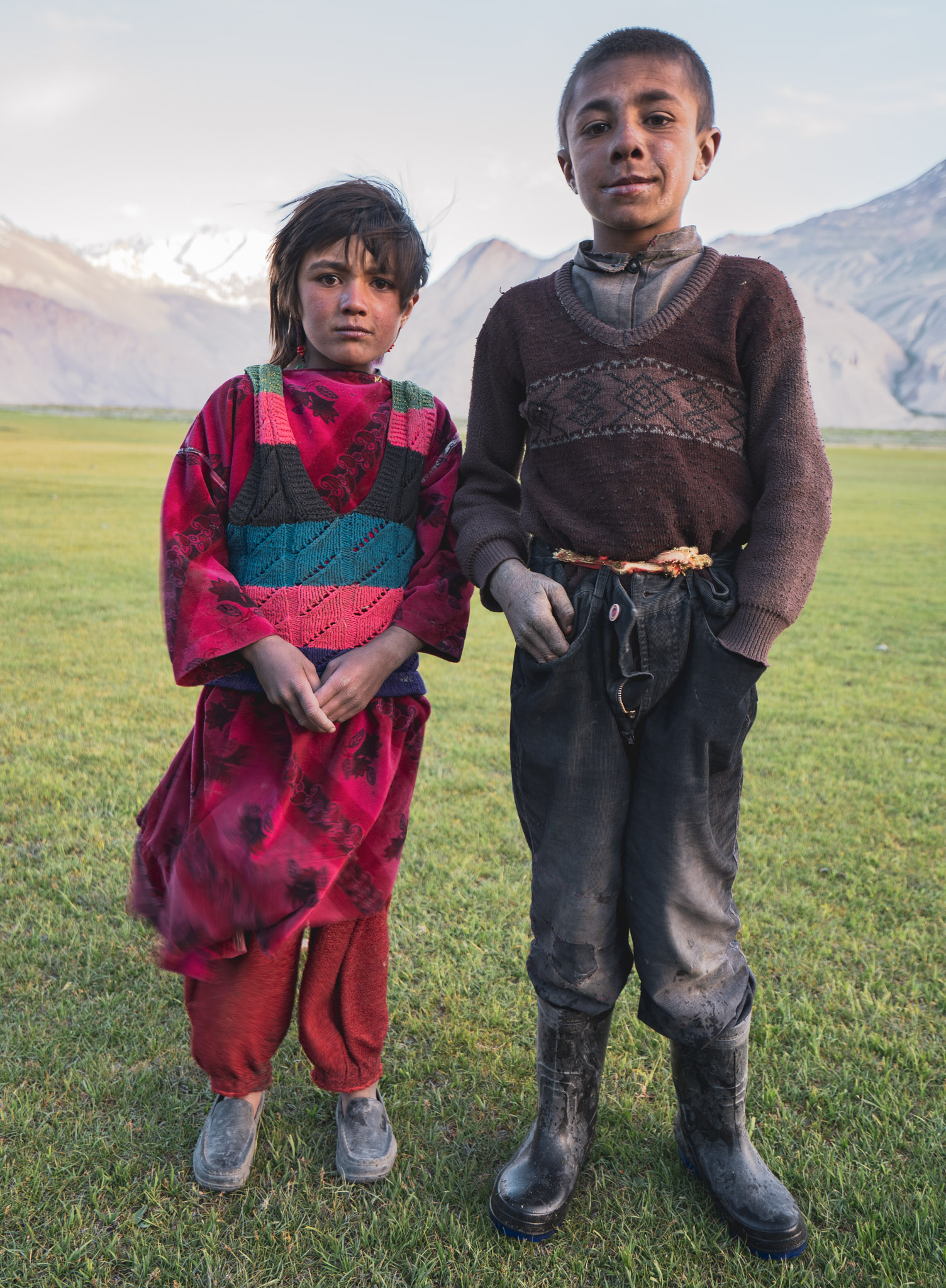
2-Weeks in the Wakhan Corridor
Two weeks is the minimum amount of time that one needs to visit the Kyrgyz communities in the Little Pamir. Trekking to Chaqmaqtin Lake takes at least 8 days round-trip, and you’ll need some time on each side to get to/from Sarhad-e-Broghil and arrange your permits.
3-Weeks in the Wakhan Corridor
If you’ve got three weeks in the Wakhan Corridor, there’s a ton you can do. You could visit many of the Kyrgyz communities around Chaqmaqtin Lake, or spend a longer amount of time learning about Wakhi village life. If you’re planning on spending this long here, you probably already have a decent idea of what you want to do.
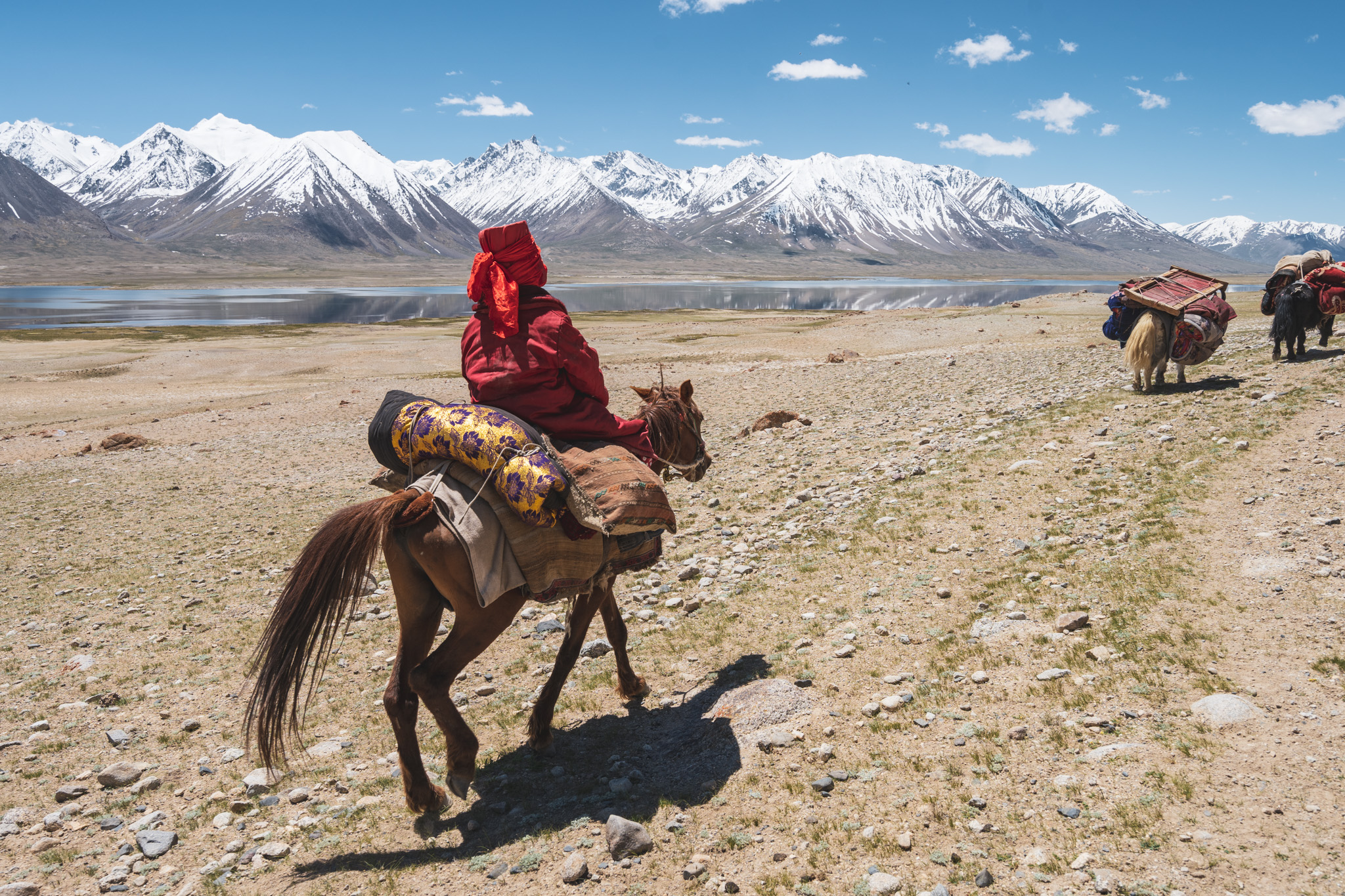
Read next: Roadworks in Afghanistan’s Little Pamir
Getting an Afghan Visa
Getting an Afghan visa is the first step to any trip to the Wakhan Corridor. Fortunately, it’s quite simple to get an Afghan visa at the Khorog Afghan Consulate.
I got my Afghan visa in Islamabad, Pakistan. This info about getting it in Khorog is gathered from reports I’ve read online.
The Afghan Consulate in Khorog is open weekdays from 9 am to noon. It’s located near the Pamir Lodge, and is also marked on maps.me.
The visa will cost anywhere from $100 to $220 depending on your nationality (most expensive for Americans).
You’ll need to bring a passport-sized photo and a copy of your second Tajik e-visa.
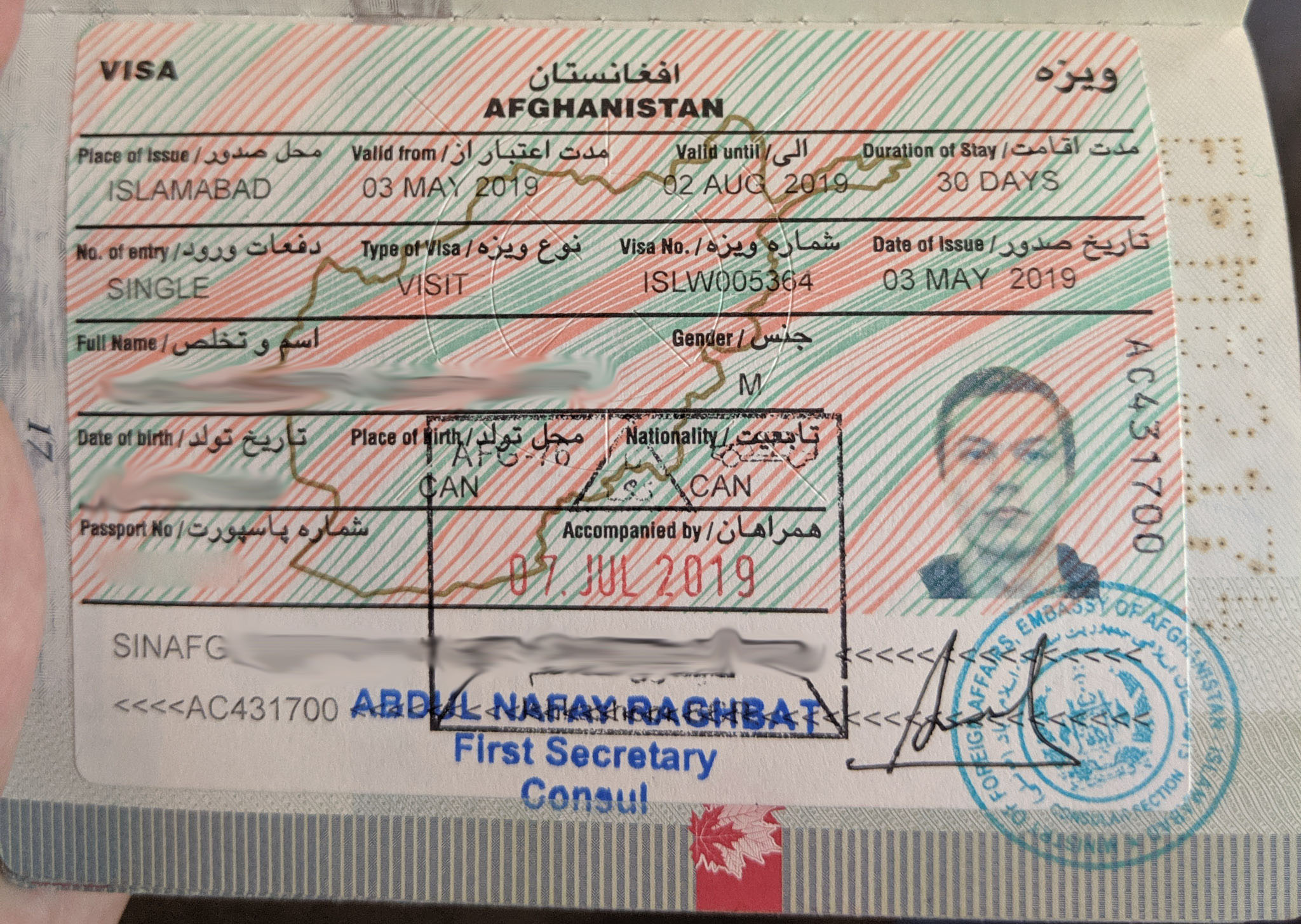
Getting to/from the Wakhan Corridor
At the moment, the only way to access the Wakhan Corridor as a tourist is via Tajikistan. Overland travel from other parts of Afghanistan is still unsafe, and it isn’t possible to fly directly to Ishkashim.
Two border crossings are currently open for tourists and are useful for accessing the Wakhan Corridor – these are the Ishkashim and Shegnan border crossings.
Ishkashim Border Crossing
You’ll likely want to use the Ishkashim border crossing, as it’s the most convenient crossing for visiting the Wakhan Corridor.
On the Tajik side, the border crossing is a few kilometres outside of Tajik Ishkashim. If you’re coming from Khorog, you can ask to be dropped off right at the border as the vehicle drives by.
Getting to Ishkashim
Minivans and shared cars run the route between Khorog and Ishkashim. You should expect to pay 50 somoni for the three-hour trip. Vehicles depart in the morning from the opposite side of the river near the Khorog Bazaar. The location is marked on maps.me
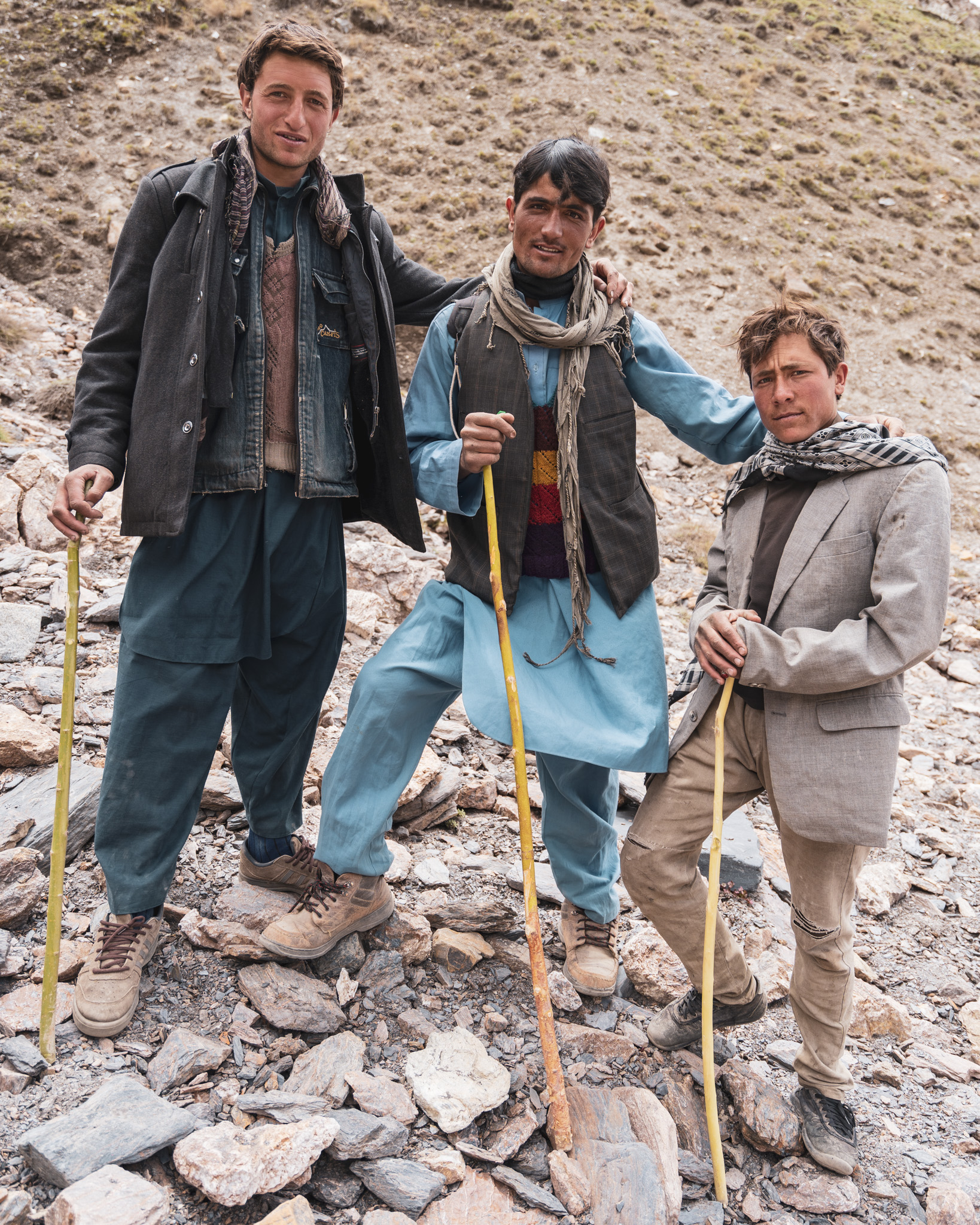
Crossing the border
Officially, the border is open from Monday to Saturday and is closed for a short lunch break every day.
However, I managed to return from Afghanistan to Tajikistan on a Sunday, when the border is “officially” closed. A friend in Ishkashim called a border guard and got them to open it for me. It seems the opening times aren’t too strictly enforced here.
It’s a very easy crossing, and the border guards were very friendly (the Afghan ones even took selfies with me!). I didn’t even have my bags searched, although I’ve heard that others have had this happen.
Be sure to have a printed copy of your second Tajik e-visa, as the Tajik border guards wanted to see it. There have been some situations where tourists have gotten stuck in no man’s land because they didn’t have a second visa, and they want to avoid this in the future.
Getting to Afghan Ishkashim
After crossing the border, you’re about an hour’s walk from the Ishkashim bazaar. You can walk, or take a taxi.
If you take a taxi, be sure to negotiate. They’ll try to charge $20 for the 5-minute drive, but a more reasonable price is $5-10.
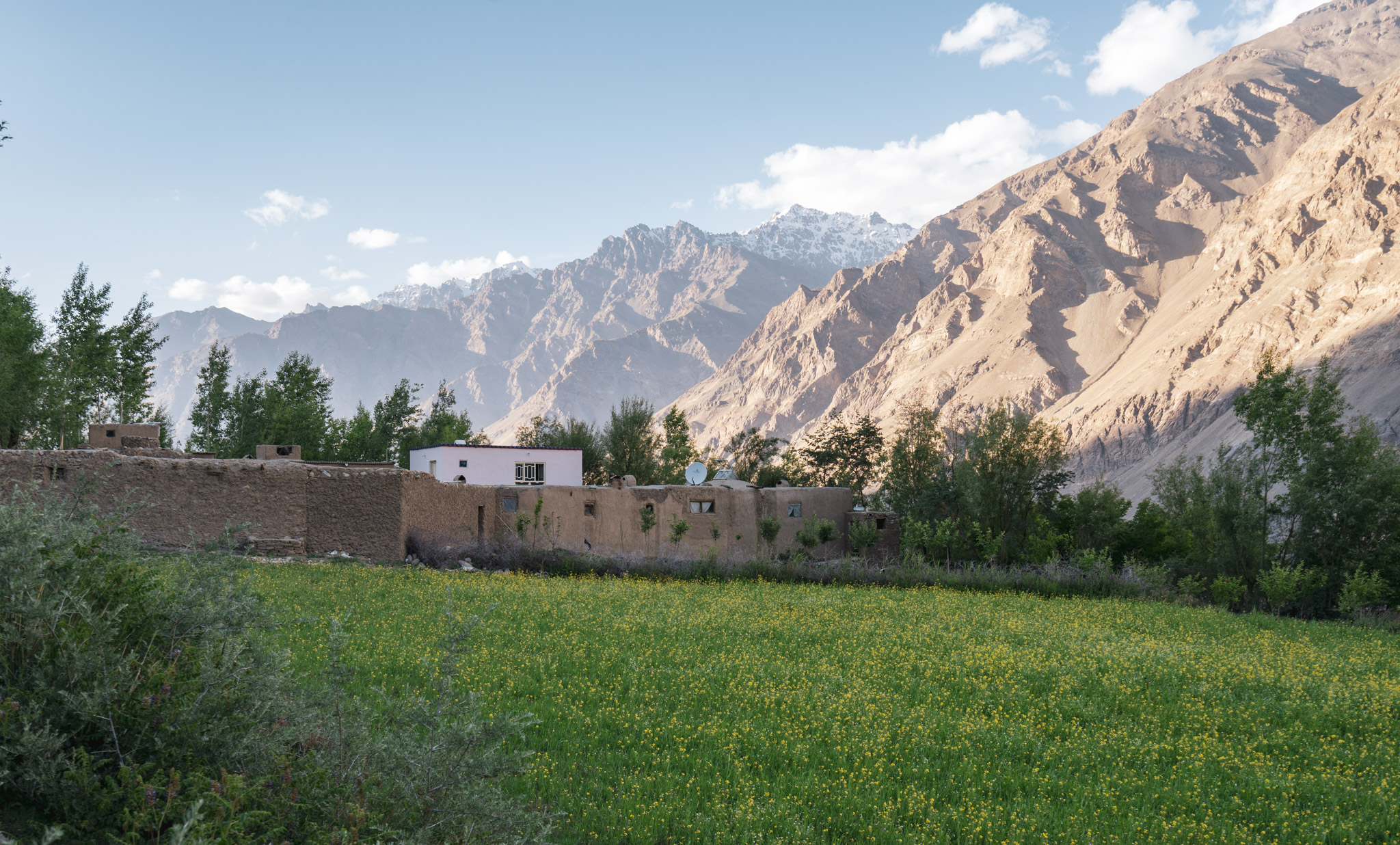
Shegnan Border Crossing
This border crossing is much less frequently used by foreigners, but also an option. I haven’t used it, but I did run into a tour group who did.
The Shegnan border is located very close to Khorog and crosses into the Shegnan district of Afghanistan. The border is reportedly open from Monday to Saturday.
After crossing to Shegnan, if you’ll need to find transport to Ishkashim. According to someone I met from Shegnan, a seat in a shared car from Shegnan to Ishkashim is about 1000A.
Let me know if you’ve used this border crossing! There’s very little info about it online.
Money in the Wakhan Corridor
US dollars are king here in the Wakhan Corridor. You’ll need to bring as many dollars as you’ll need with you – there aren’t any ATMs in the Wakhan.
Instead, I highly recommend getting as many dollars as you’ll need in either Dushanbe or Osh. It’s quite easy in either of these places.
In Dushanbe, the Hilton has an ATM inside that dispenses crisp $100 bills.
Changing USD to Afghani
In Ishkashim, you can change your dollars to Afghani at the mobile phone shops in the bazaar. They will only change crisp bills and prefer $50 and $100 denominations.
I recommend doing some math and figuring out roughly how many Afghani you’ll need, so you avoid changing too many dollars. You won’t get as favourable a rate changing back from Afghani to USD, and they can’t be changed anywhere after you’ve left Afghanistan.
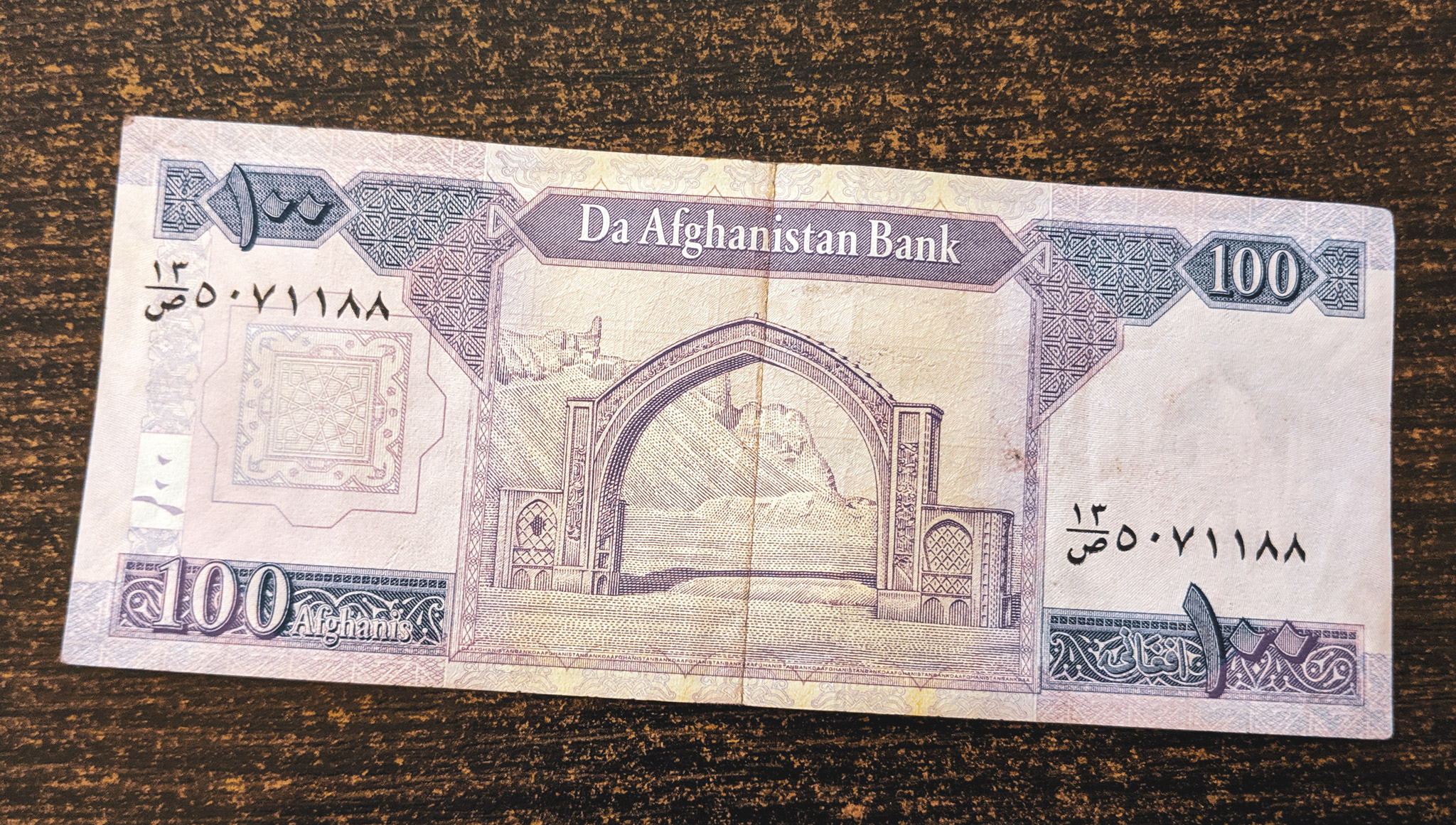
Transportation in the Wakhan
Transportation in the Wakhan is famously expensive – if you decide to pay the official tourist prices. There are cheaper ways to get around here though – let’s go over the different options.
Tourist transport
If you’ve got money, you can just pay outright for a tourist ride between any of the main towns.
The official rate for a tourist vehicle from Ishkashim to Sarhad-e-Broghil is $300, one-way.
If you’re travelling in a group this is a viable option as you can split the price, but if you’re a solo traveller it’s a bit ridiculous.
Local shared cars
Contrary to most reports online, it is possible to just find a seat in local shared cars that are travelling between the villages.
This is how I got around and I found it quite simple. It’s a bit difficult to find out what a fair price is between different towns, but when I asked drivers they usually quoted me a price that seemed fair.
Here’s what I paid for a few different routes:
- Ishkashim to Qala-e-Panja: 1500A (stopping in Khandood for permits)
- Qala-e-Panja to Sargaz: 1000A (too much, I met another driver who would hire his whole car for 1500A on this route)
- Sargaz to Sarhad-e-Broghil: 2000A (possibly could’ve gotten lower if I had waited longer)
- Sarhad-e-Broghil to Ishkashim: 3000A (did the drive in a single day – this was a great deal in my opinion)
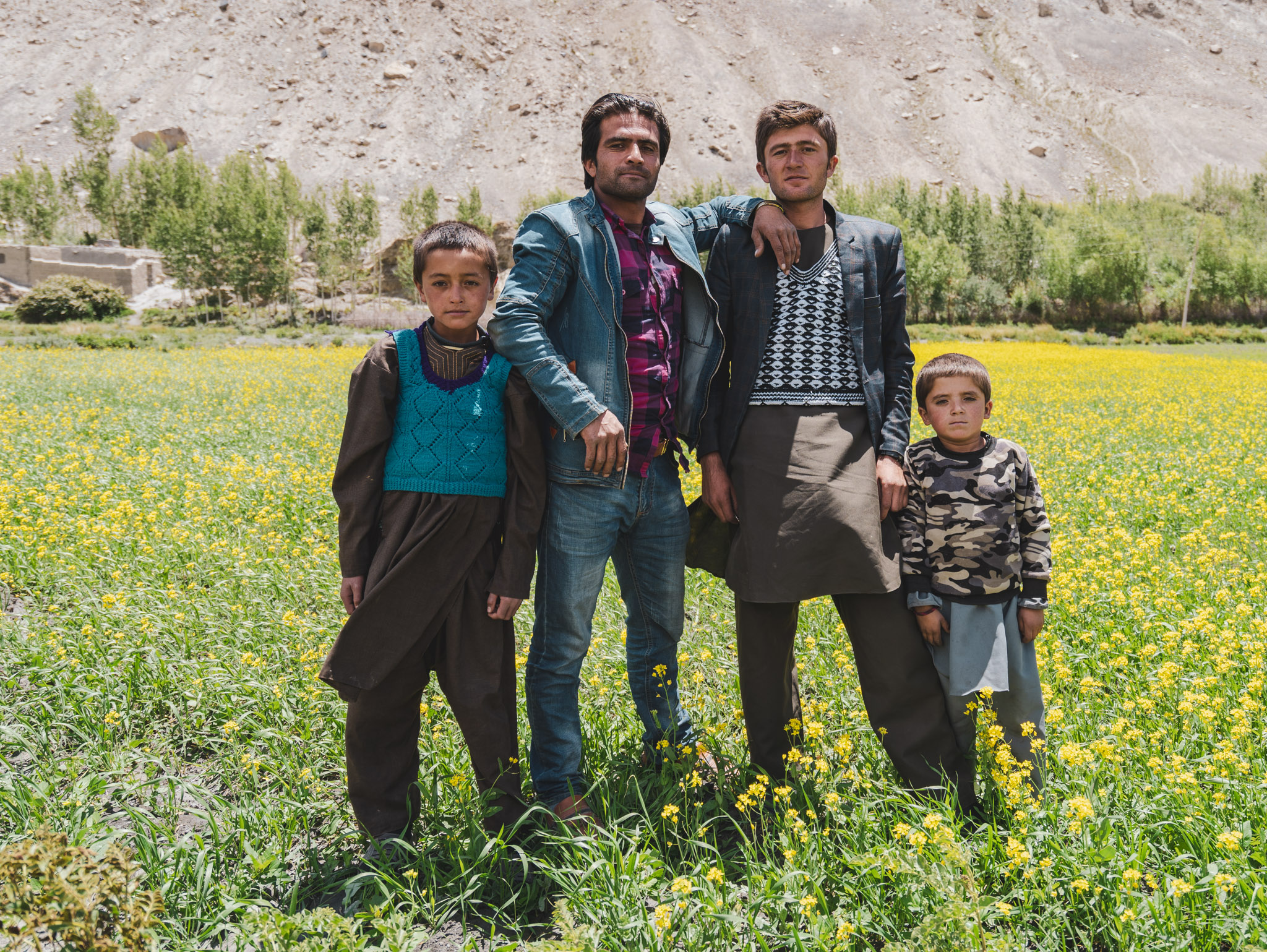
Hitchhiking
I didn’t try hitchhiking, although it is totally possible. There are quite a few vehicles in the Wakhan Corridor that belong to the Aga Khan Foundation, and if they have space when they’re driving between towns they would give you a free lift.
I met a few NGO workers in guesthouses that also had a car with them, and if I had been travelling in the same direction I definitely could’ve joined them.
So, hitchhiking is possible, but it will definitely take some time. You should budget at least for the price of a local shared car, just in case you can’t find anything.
Walking
You could also walk the entire length of the Wakhan if you wanted. Personally, I think the long walk from Ishkashim to Sargaz would be rather dull.
From Sargaz to Sarhad-e-Broghil, the scenery is very nice, and walking this route should take two or three days one-way. I had planned on walking the route, but got picked up by a shared car about 7-kilometers outside of Sargaz.
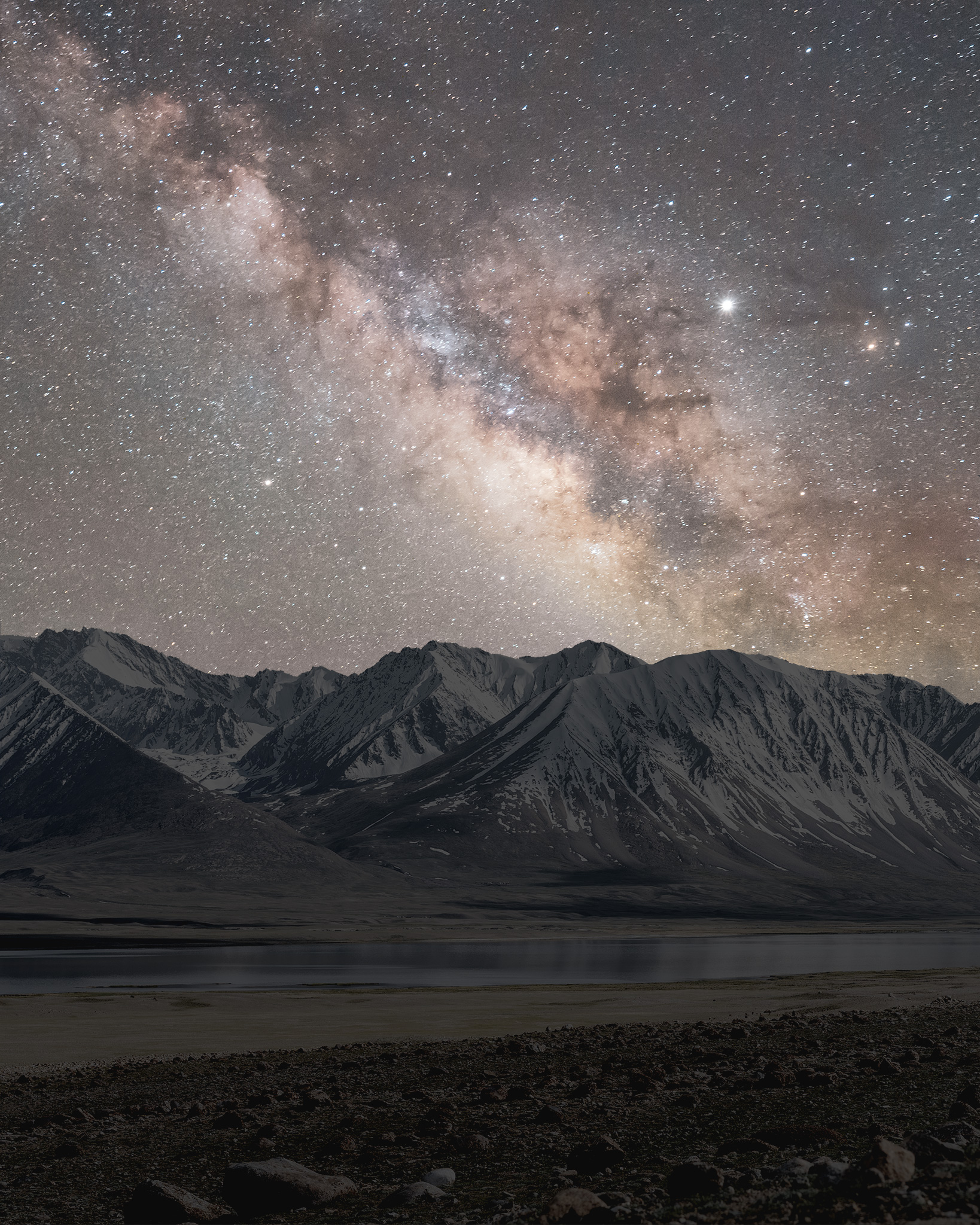
Accommodation in the Wakhan
In the Wakhi villages of the Wakhan Corridor, accommodation is in the form of guesthouses. They’re usually decent enough and will cook you a nice dinner and breakfast.
Ishkashim
There are a few guesthouses in Ishkashim, the most popular one being the Marco Polo Guesthouse. The rate for this guesthouse seems to be $25, but there have been reports of people who look “wealthy” being charged more. Marco Polo Guesthouse doesn’t have any Tajik TCell reception.
You can also stay at Wafai Guesthouse – the price should be similar to Marco Polo. Wafai Guesthouse is located a kilometre or two out of town (marked on maps.me), but it does have Tajik TCell reception!
If you’re looking for a place to grab lunch in Ishkashim, there are a few hidden restaurants. Ask around for kebab and someone will show you the way. A lunch of 8 skewers, naan, and chai should cost 150A.
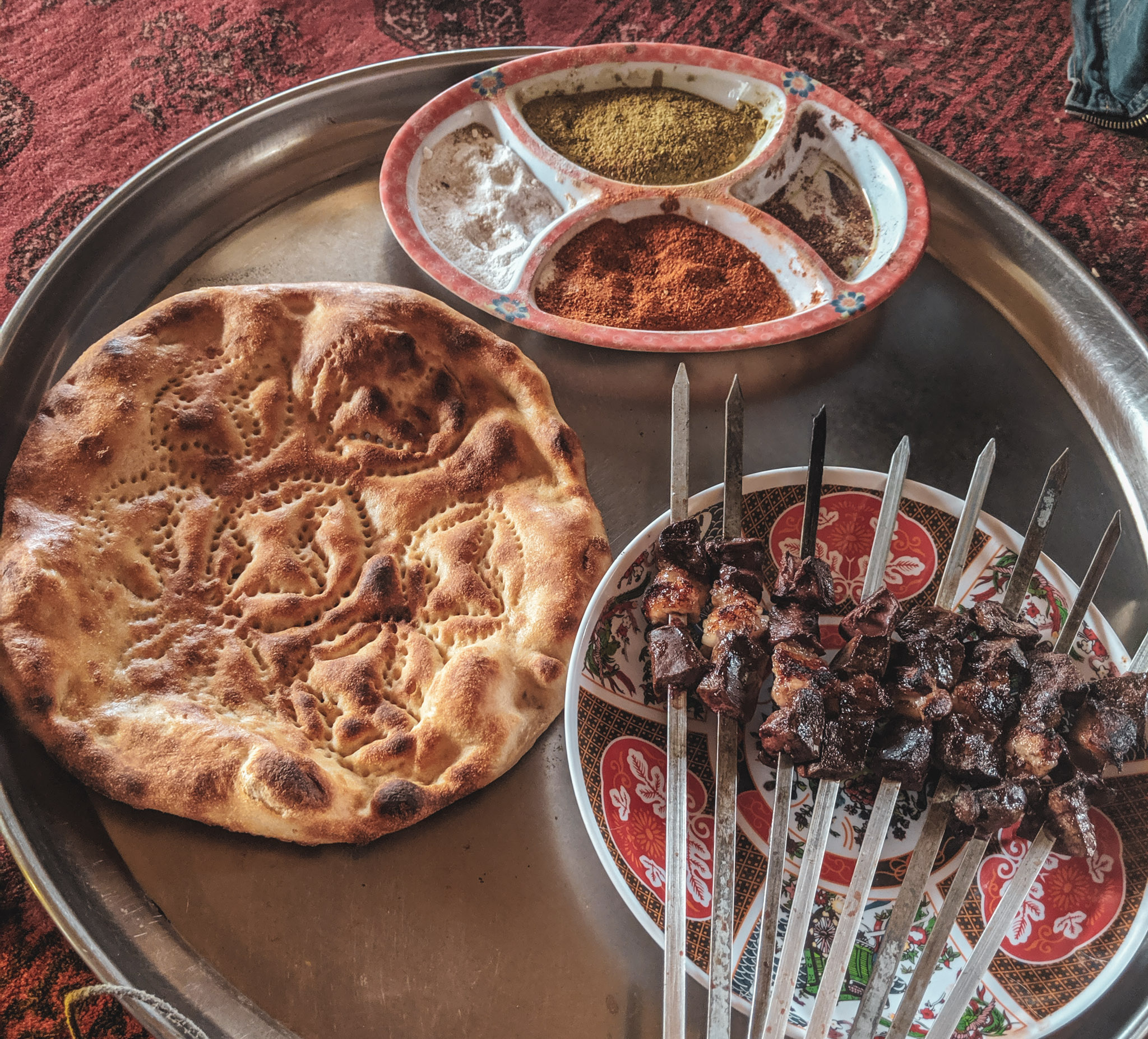
Khandood
There is a guesthouse in Khandood, although I didn’t stay here. Quite a few people in Khandood speak English, so just find one of them and ask them to show you the way. It should cost around $20.
Qala-e-Panja
In Qala-e-Panja, there are two guesthouses that I know of.
I stayed at the “Qala-e-Panja Guesthouse“, located near the police checkpoint at the entrance of town. I paid $20 for the night.
I’ve also heard good things about Siri Mohammad’s guesthouse, but I haven’t stayed there.
Sarhad-e-Broghil
There are a few guesthouses in Sarhad, and I HIGHLY recommend the one called Zarik Guesthouse. It’s not actually in Sarhad, it’s in the village of Chihil Kand, about three kilometers away.
The family running Zarik Guesthouse is extremely kind and hospitable and was super excited to see photos from my trek when I returned.
Little Pamir
In the Little Pamir, you can stay in any of the Kyrgyz settlements. Personally, I stayed in Bozai Gumbaz and Itchkili (north side of Lake Chaqmaqtin).
In Bozai Gumbaz, there was a separate room for me to eat and sleep in. In Itchkili, I just stayed in the same room as the family hosting me.
Room and board usually will cost you 500 Afghani in the Kyrgyz settlements.
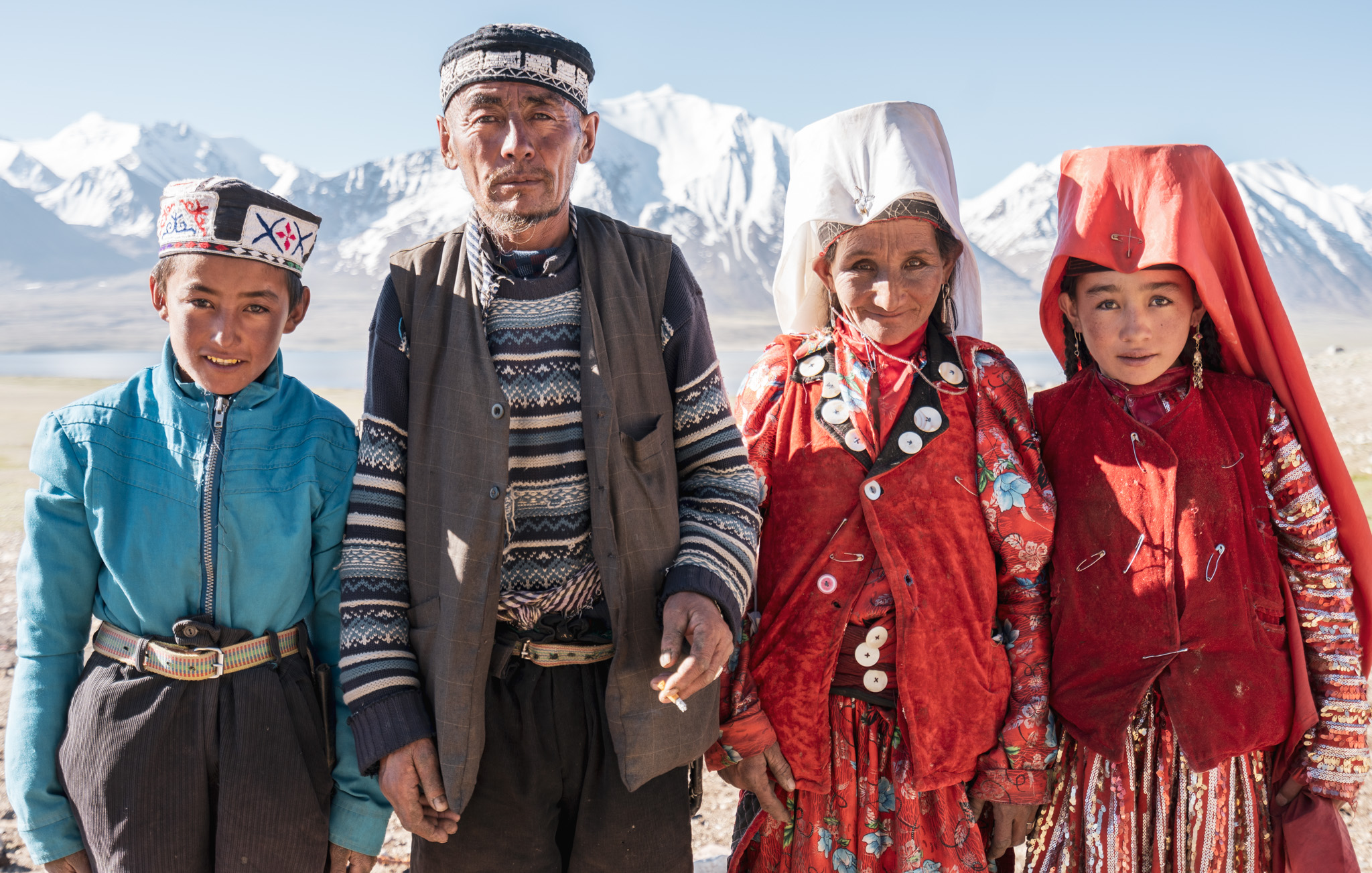
Trekking in the Wakhan Corridor
If you go through all the trouble of getting an Afghan visa and visiting the Wakhan Corridor, you should definitely go on a trek.
Trekking Routes
There are a ton of options for trekking here, but the most popular treks are to Chaqmaqtin Lake in the Little Pamir and the trek to Noshaq Base Camp.
I did the trek Chaqmaqtin Lake, as it gives you the opportunity to meet the Kyrgyz people living in the Little Pamir. I highly recommend this trek.
Little Pamir & Chaqmaqtin Lake
The trek to Chaqmaqtin Lake gives you a look into the life of both the Wakhi and Kyrgyz people of Afghanistan’s Wakhan Corridor.
Typically, the trek takes anywhere from 8 to 10 days. You’ll also need a few days on either side to arrange permits and travel to/from Sarhad-e-Broghil (the starting point of the trek), so plan on spending about two weeks in Afghanistan.
There are two routes that you can take to reach the Little Pamir plateau. They’re known as the “low route” and the “high route”.
The low route follows the path of the roaring Wakhan River. It typically takes people three days to reach the first Kyrgyz settlement of Bozai Gumbaz. On the low route, you’ll need to cook and camp until you reach Bozai Gumbaz.
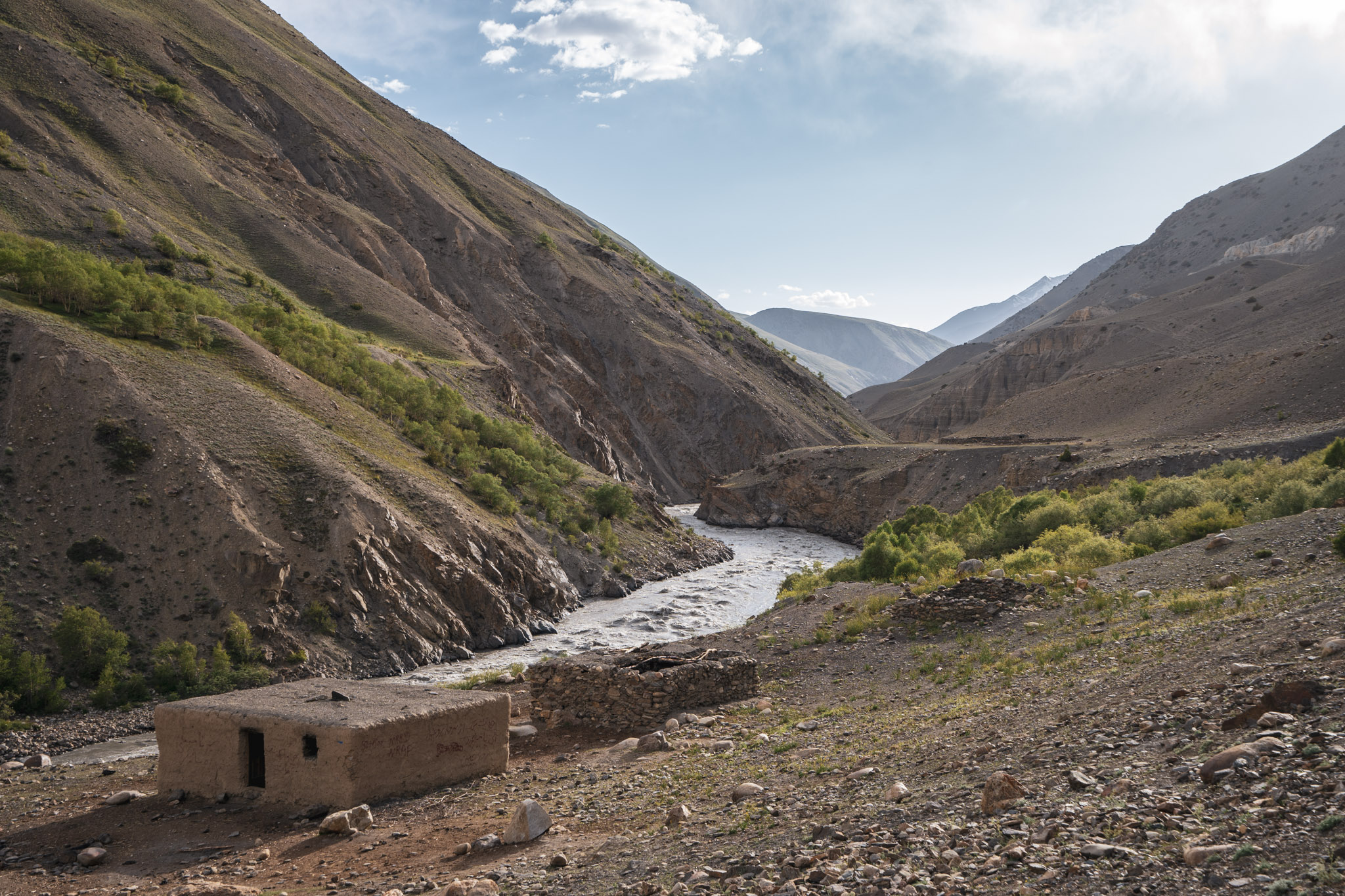
In the past, the low route was impassable in July due to high water levels in some of the tributaries of the Wakhan River. This has been resolved with the construction of some new bridges – although still expect a few tough river crossings in July if you’re without an animal to ride.
The high route accesses the Little Pamir via Garumdee Pass (4,895 meters). Garumdee can remain snow-covered until quite late in the summer, but should still be passable provided you have the right footwear. On the high route, you’ll need to cook and camp your first night, but after that, there are Wakhi settlements (in summertime) that can provide you with basic food and accommodation.
A popular itinerary is to take the low route towards the Chaqmaqtin Lake (better for acclimatization than the high route), and then return to Sarhad-e-Broghil via the high route.
I’ll describe the trekking route in more detail in a subsequent post.
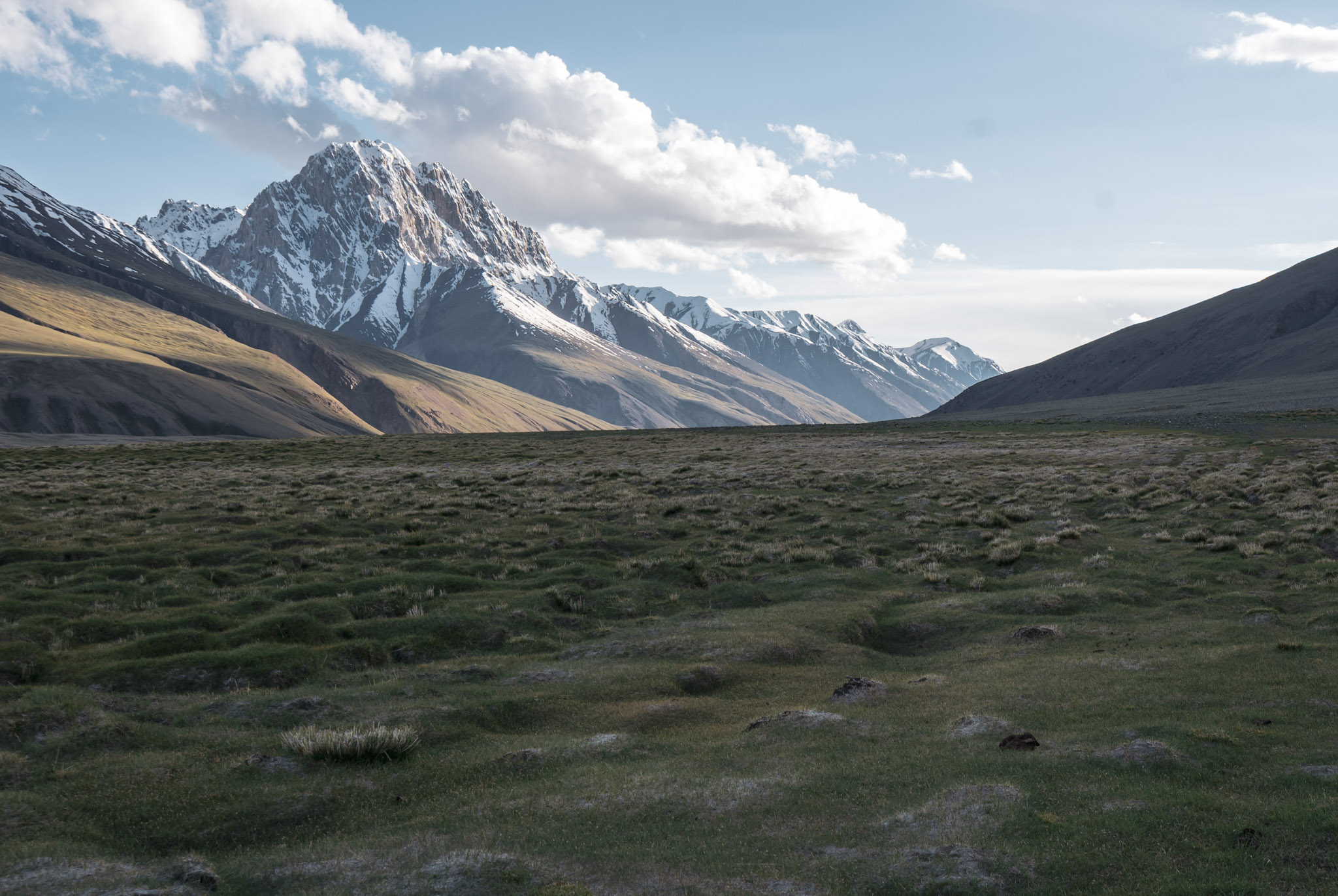
Trekking Guides
Most people who go trekking in the Wakhan Corridor take some sort of guide with them. If you don’t speak any Dari or Kyrgyz and want to have conversations with the locals, a guide is a must. English is rarely spoken outside of the larger Wakhi villages (and even in these villages, there are only a few speakers).
The trekking route itself is easy to follow, you don’t really need a guide to help with route-finding.
If you do decide that you want to hire a guide, I highly recommend finding a Wakhi guide. A Wakhi guide will be received better by the people you meet along the way.
The guides in Ishkashim are experts at ripping people off – they charge $50 a day for their services, and will try to get more money out of you when they can. I recommend that you find a Wakhi guide in Khandood or Qala-e-Panja.
There are two Wakhi guides I’ve seen recommended by multiple travellers – Ibrahim Hamdard from Khandod (WhatsApp: +93749229030), and Siri Mohammad from Qala-e-Panja. They reportedly speak great English and charge much more reasonable rates than the Ishkashim guides.
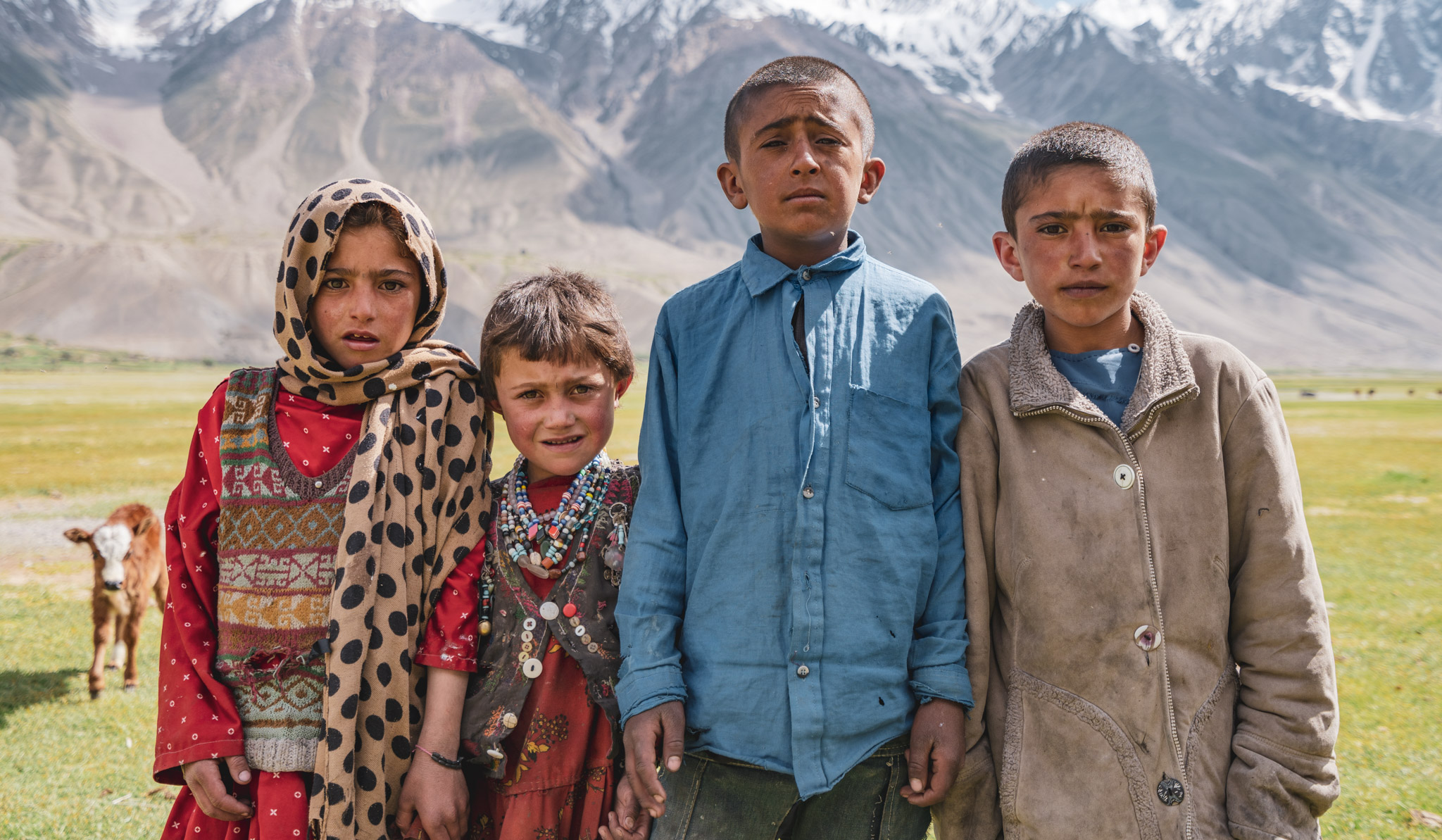
Pack Animals
Basically everyone who goes on a multi-day trek in the Wakhan Corridor seems to hire a beast of burden.
Most commonly used are donkeys, which typically cost 500A per day. Horses are also often used, and they cost 1000A per day. You can even ride a horse all the way to Chaqmaqtin Lake if you’d prefer that over walking.
Any animal you hire will be accompanied by its owner. The owner will take care of themselves, and they may even know a few words of English (but don’t expect much).
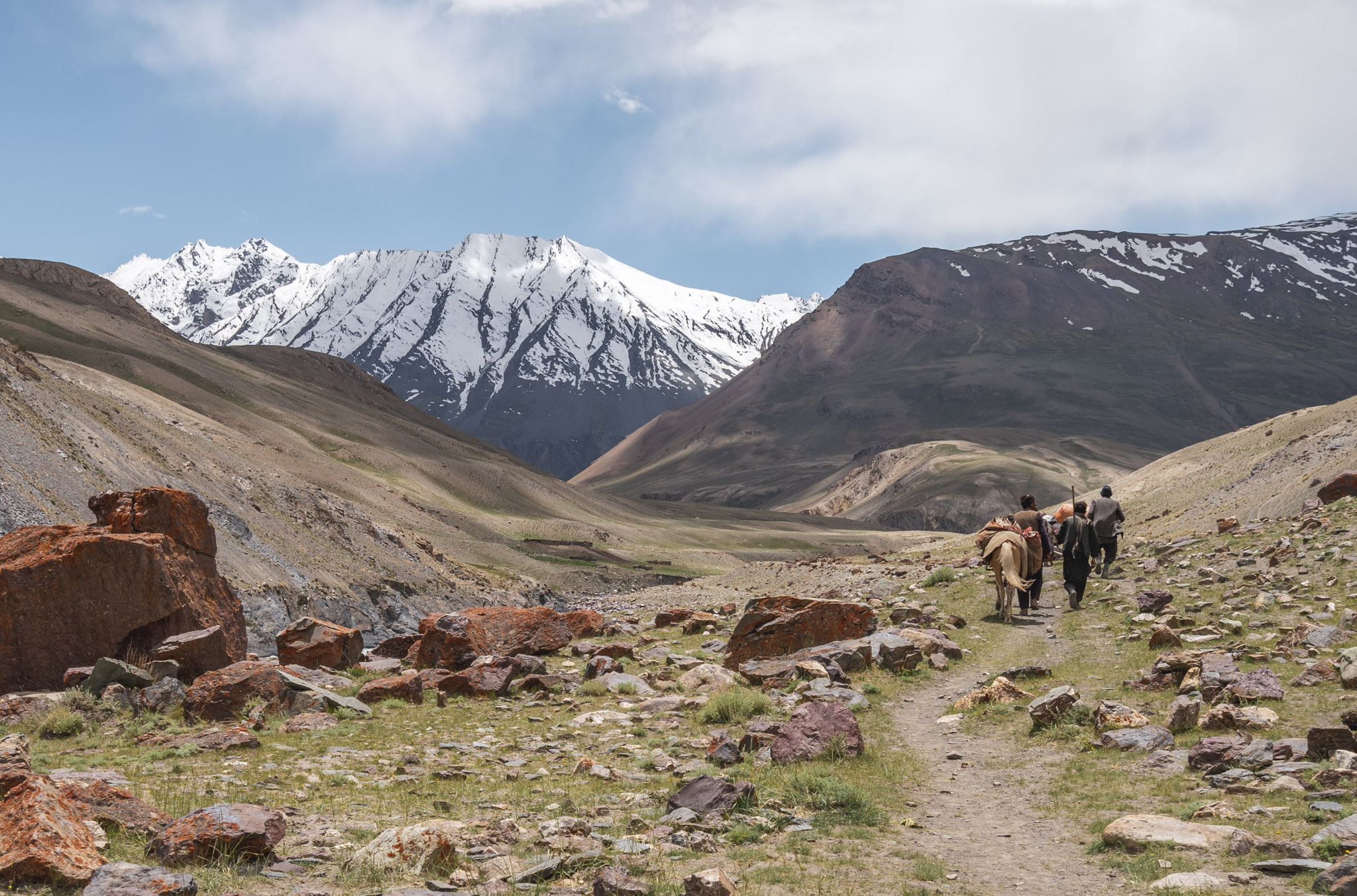
Do I need a pack animal?
Not at all. Before my trek, I hadn’t heard of anyone doing it without an animal, and couldn’t decide if I should bring one or not.
I tend to trek pretty fast (donkeys don’t walk very fast…), and like being alone in the mountains. I decided to go completely solo and carry all of my supplies.
The first day of the trek was difficult, with its 1000 meter climb to the top of Daliz Pass. My bag was quite heavy, as I had enough food for 5 days. But as I started to eat my food and lighten my load, everything went pretty smoothly.
On my return trip, I managed to hike from Bozai Gumbaz to Borak in a single day (it did take me 12 hours, though) – that’s 45 kilometers. It definitely wouldn’t have been possible if I was with a donkey.
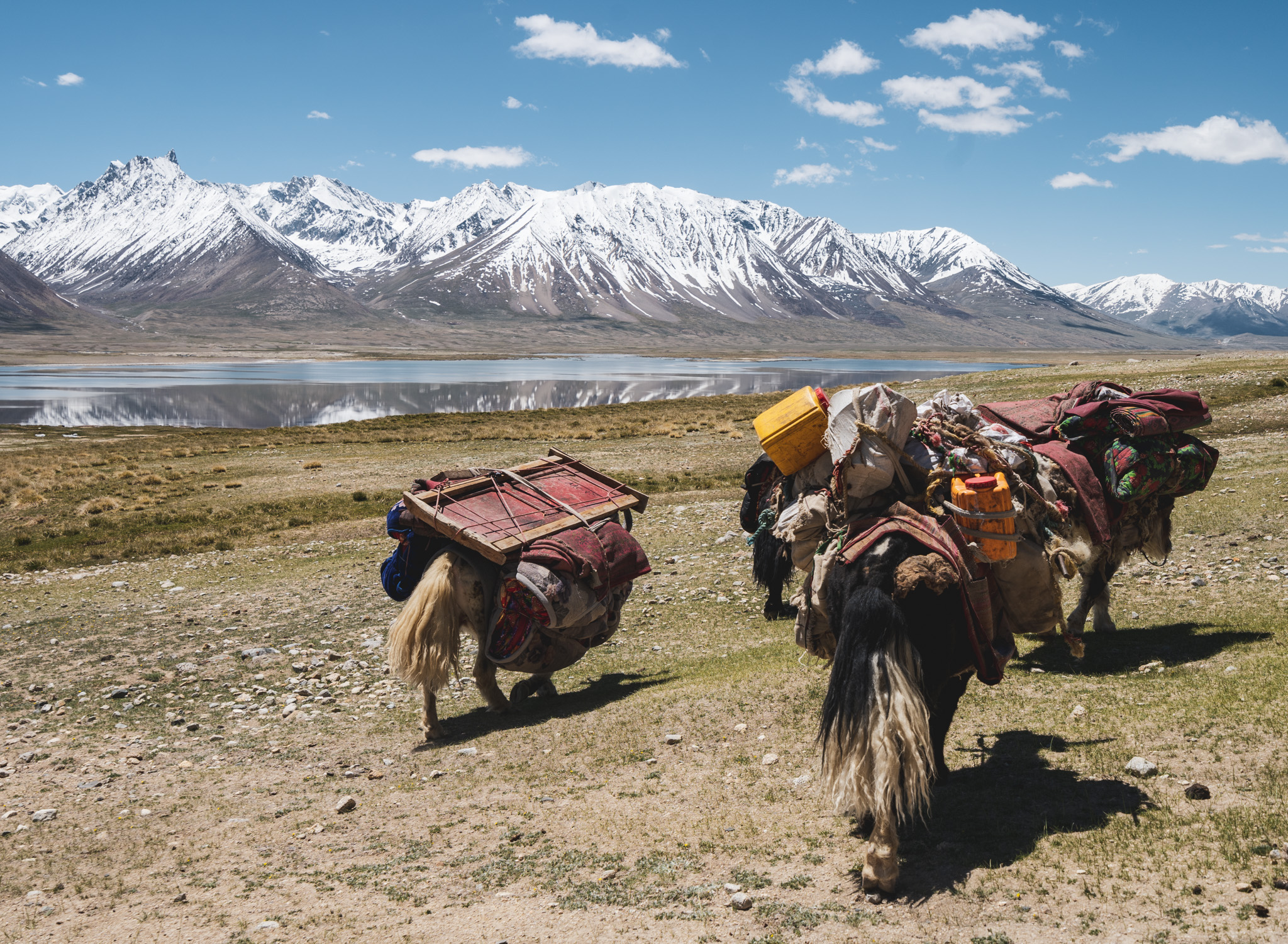
Food & Water
If you’re planning on trekking in the Wakhan Corridor, you should do a bit of planning regarding food.
On the low route to Chaqmaqtin Lake, you’ll need enough food for at least three days (one-way).
If you decide to trek with a guide or donkey, this is less of an issue. You’ll be able to carry plenty of rice and possibly even some veggies.
As I decided to trek unsupported, I had to carry all my food and cooking equipment. I did some meal planning when I was in Dushanbe and picked up all of my supplies there. You can also get supplies in Khorog, but your options will be quite a bit more limited.
Don’t count on being able to purchase many supplies in Ishkashim, although there are a few things you can get here.
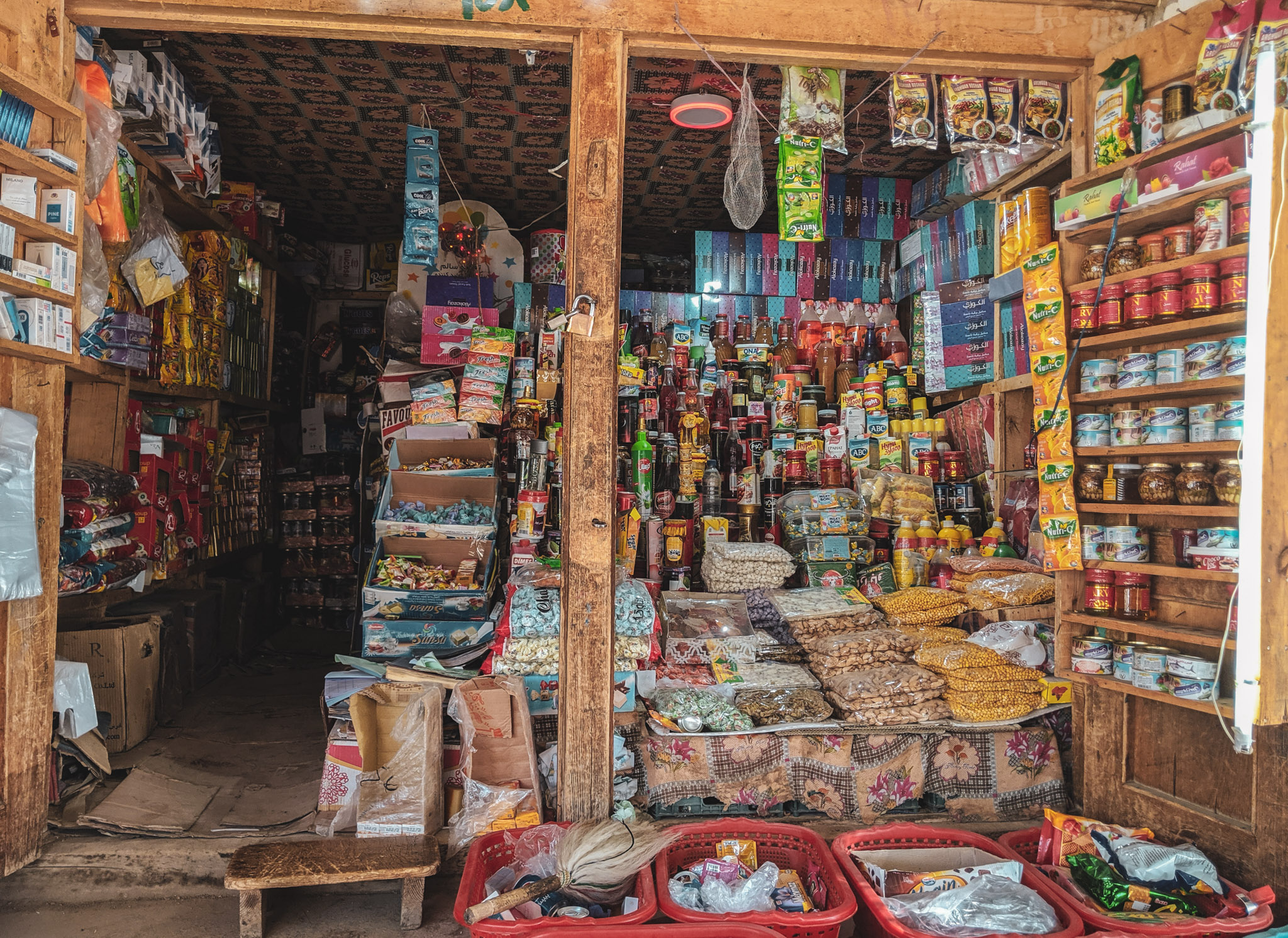
Water is plentiful while trekking. I personally carry two litres and fill up when I come to a new source, and never had any issues with running out. I used chlorine tablets to purify my water – many of the streams are full of animal feces and it’s not worth risking sickness when you’re so far from civilization.
Read next: Ultimate 4-Week China Backpacking Itinerary
Wakhan Corridor Permits & Registration
The permit/registration system in the Wakhan Corridor is always changing – this info is based on my experience in late June 2019. Don’t worry too much though, it’ll all sort itself out when you arrive.
Passport Copies & Photos
You’ll need around 6 passport-sized photos, and 10 passport/visa copies to arrange permission to travel all the way to Sarhad-e-Broghil.
There’s a copy shop in the Ishkashim bazaar – you can get copies and photos done there.
Foreigner Registration Card
In Ishkashim, the first thing you need to do is get a tourist registration card.
The tourist registration card basically has your info (name, passport number, where you’ll visit) written in Dari. At checkpoints, they’ll want to see this card.
You can get this card from the “Tourist Administrative Centre” marked on maps.me.
It’s free, although you’ll need to provide two of your passport photos and one or two passport copies here.
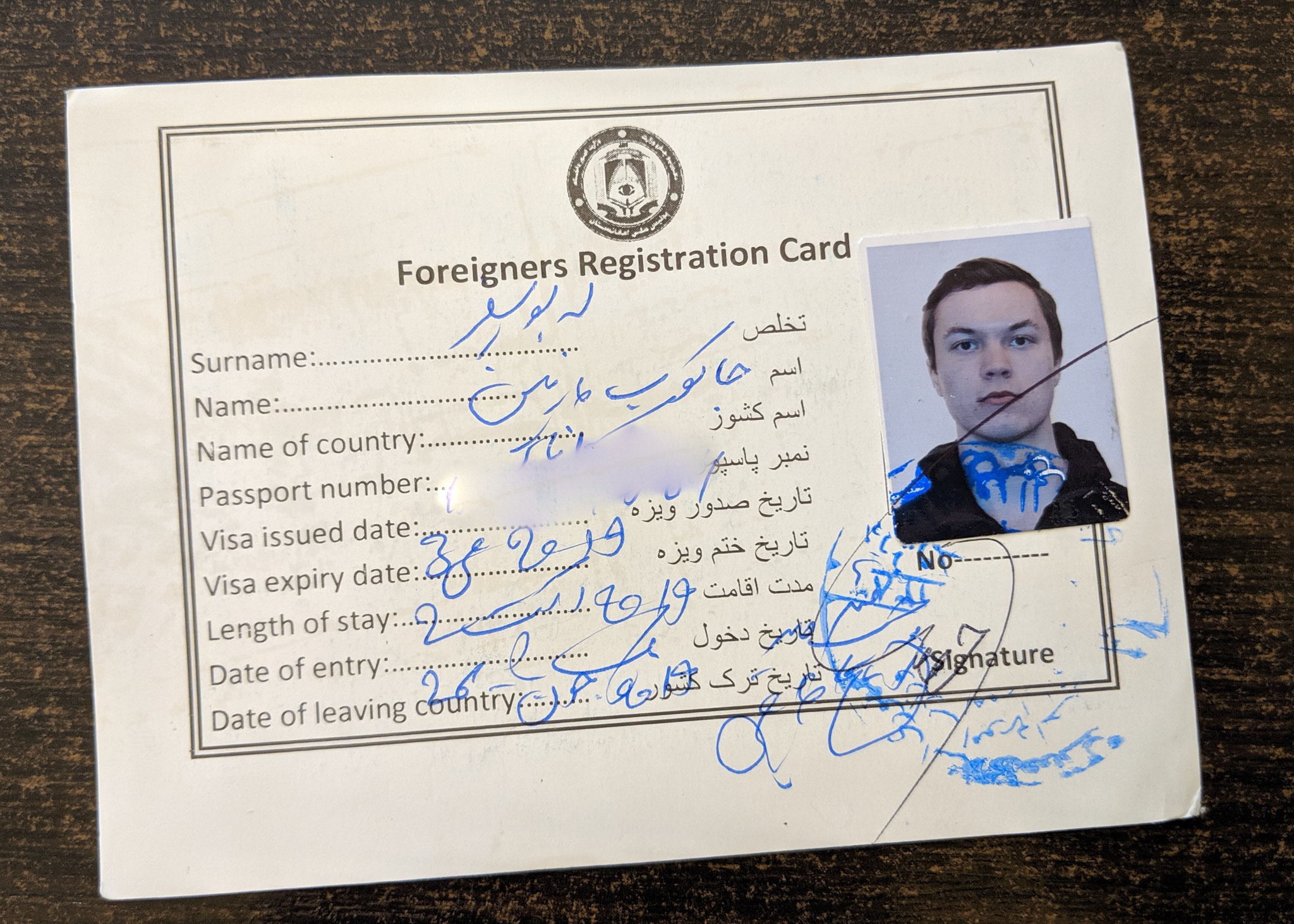
Ishkashim Police Registration
There are three types of police (normal police, border police, and military police) you need to register with while you’re in Ishkashim. They’re all located on the main road that runs through the bazaar, and will want a passport photo and passport copy each. They’re easy to find, ask a local if you’re having trouble.
Khandood Permits
On the way to Khandood there’s one checkpoint just before the village of Qazideh. You just need to show your tourist registration card here.
In Khandood, you need to arrange permits to travel further. I arrived at 3 pm on a Thursday and was told that the officials had already gone home from work, and they wouldn’t be working on Friday either (Friday is a holiday in Afghanistan).
I got a bit angry, as I didn’t want to spend two nights waiting around in Khandood. Getting angry worked – someone called the officials and got them to come back into the office.
- In the government office, they’ll print you four permits. Each permit requires one passport copy. They’ll keep one of them, and give you the other three.
- I was then taken to give one of the copies to the police next door to the government office. They also wanted a passport photo along with the permit.
- The third permit is for the police checkpoint on the way to Qala-e-Panja.
- The final permit is for the police checkpoint as you are entering Qala-e-Panja.
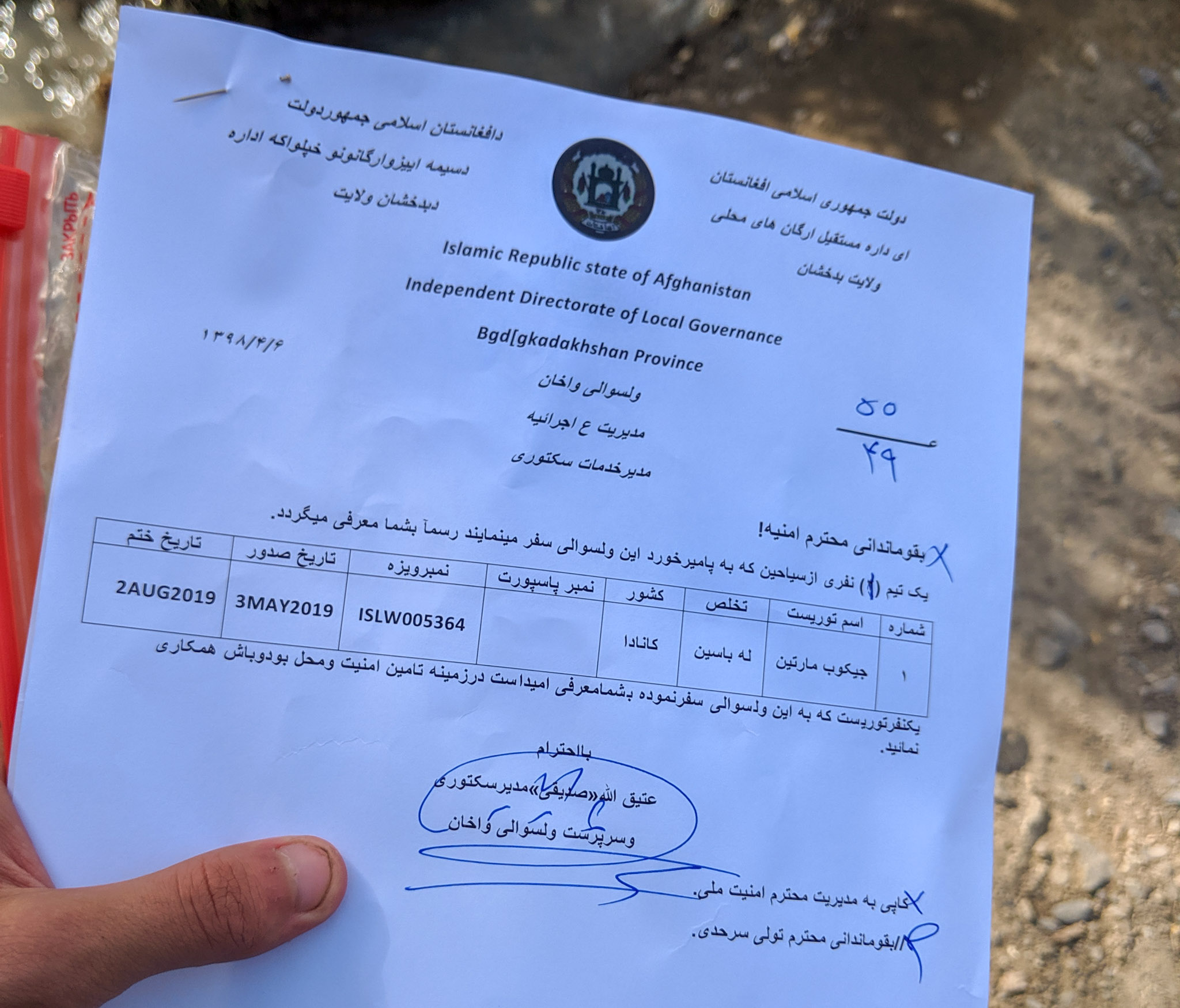
Sarhad-e-Broghil Police
I wasn’t required to have any permit or anything for the police in Sarhad, the commander just took a quick look at my tourist registration card and that was it.
When to visit the Wakhan Corridor
Afghanistan’s Wakhan Corridor can be visited year-round, but probably don’t want to be embarking on a trek to the Little Pamir in the winter (unless you’re a masochist).
The best time of year for trekking is late summer and early autumn, meaning August and September. August also seems to be high season – so if you visit at this time of year you’re likely to run into a few other tourists. When I was there in June, I only saw a few in Ishkashim – none in the Little Pamir.
Spring (May/June) and early summer (July) are also good times for trekking, although not quite as good. In the spring, there will still be snow blocking the high passes. In July water levels are at their highest, making some river crossings quite challenging.
I was there in late June/early July and had fairly good weather. At the top of Daliz Pass, there was still a tiny bit of snow. During the daytime when the sun was out, it was quite hot. At night I slept very comfortably with my -6 degree quilt. Most mornings were clear with sunny skies, and in the afternoon some clouds would form and the wind would get stronger.
During my return trek from the Little Pamir, some river crossings had gotten quite difficult. The crossing near Showr had water levels above my knees. The water was flowing so fast that it was brown, meaning that I couldn’t even see where I was stepping. It took me about thirty minutes of freezing my feet in the water to find a suitable path to wade across.
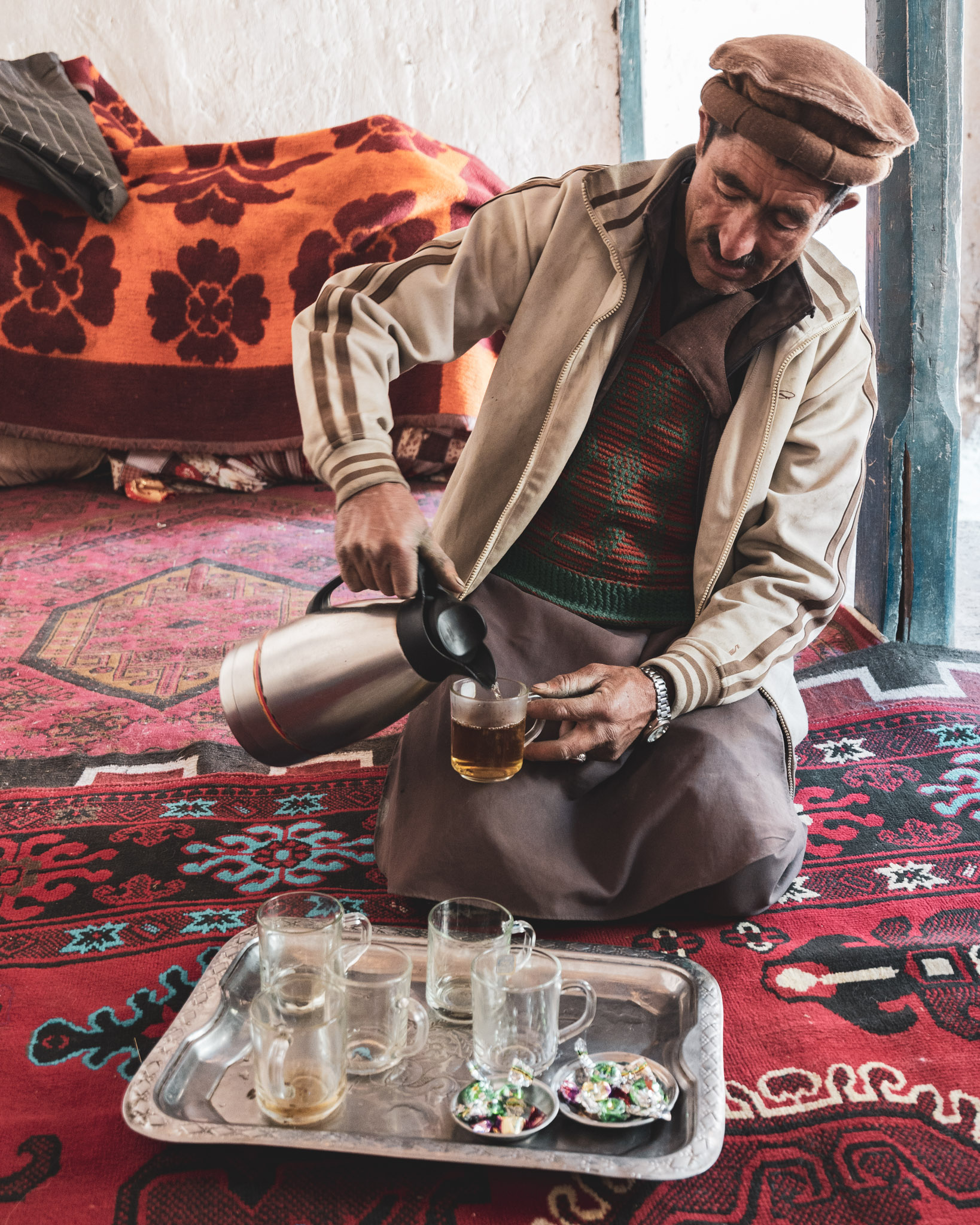
Safety in the Wakhan Corridor
The Wakhan Corridor hasn’t seen war in recent history. This isn’t to say it’s perfectly safe, but relative to the rest of Afghanistan, it is.
You should do your own research and decided for yourself if you’re comfortable with visiting.
All I can give you is my personal experience – I never felt unsafe, at all. I was treated with incredible hospitality, and locals often expressed their hate of the terror groups that plague other parts of their country.
However… I’m a dude. If you’re a female traveller, your experience will obviously be very different from mine. Check out Marsha’s report on Caravanistan for the experience of a 21-year-old solo female traveller.
Afghanistan Travel Insurance
If you’re gonna visit Afghanistan, you should definitely purchase travel insurance.
It’s quite hard to find insurance that will cover travel in Afghanistan. It varies depending on your nationality, so do some research and try to find a good provider.
Companies such as World Nomads will not cover travel in Afghanistan.
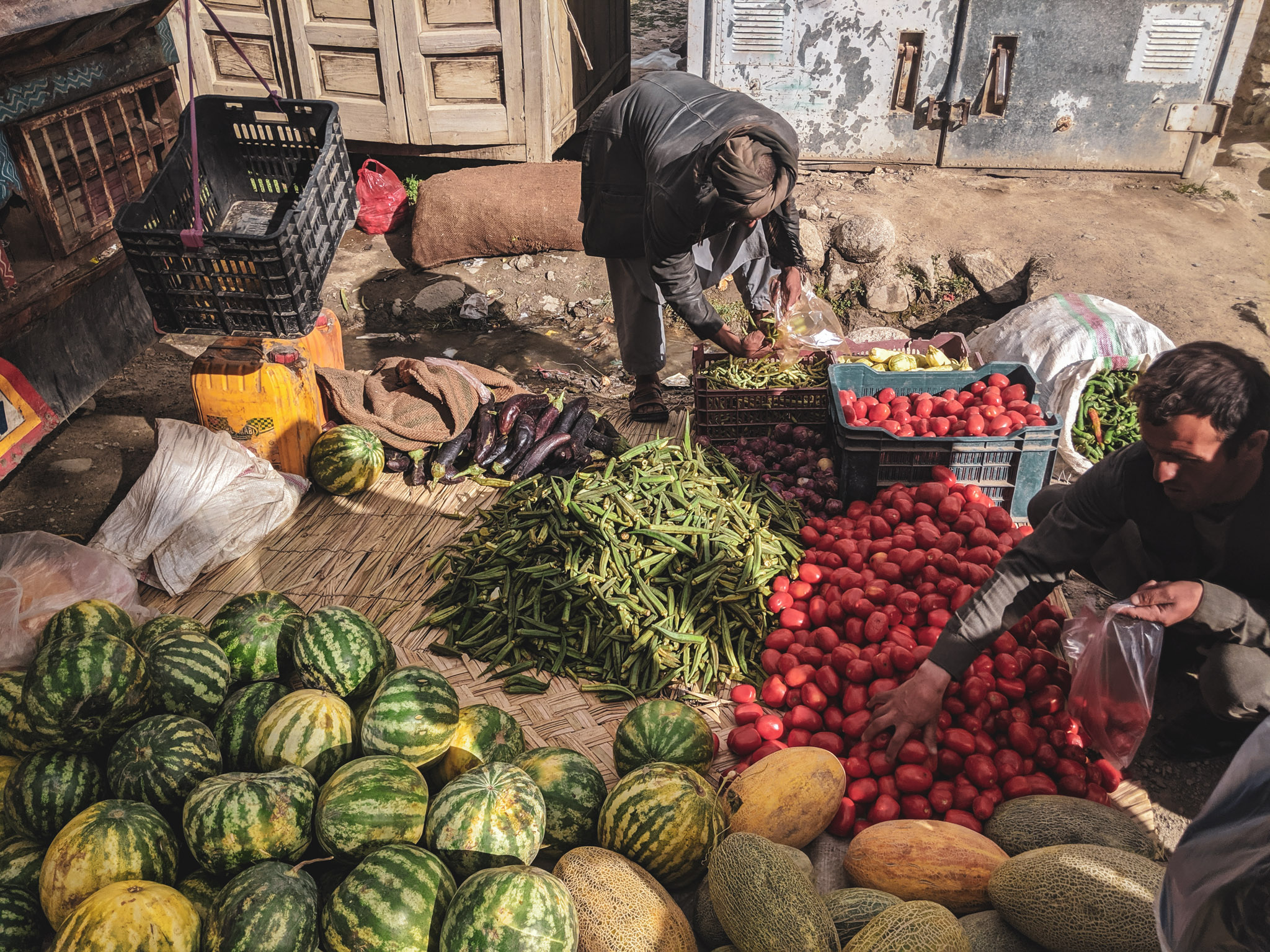
Internet in the Wakhan Corridor
There’s basically no internet in the Wakhan Corridor. Plan on doing your last internet-related activities in Khorog (even in Khorog, the internet is still quite slow).
I recommend purchasing a TCell SIM card when you’re in Tajikistan if you want to have any sort of outside world contact while you’re in Afghanistan.
With TCell, you can get 2G reception in parts of Ishkashim and then in most Wakhi villages (Khandood, Qala-e-Panja) along the Wakhan Valley up until Sast.
The 2G signal from TCell is only enough to make calls or send some messages on WhatsApp. There’s no WiFi anywhere here.
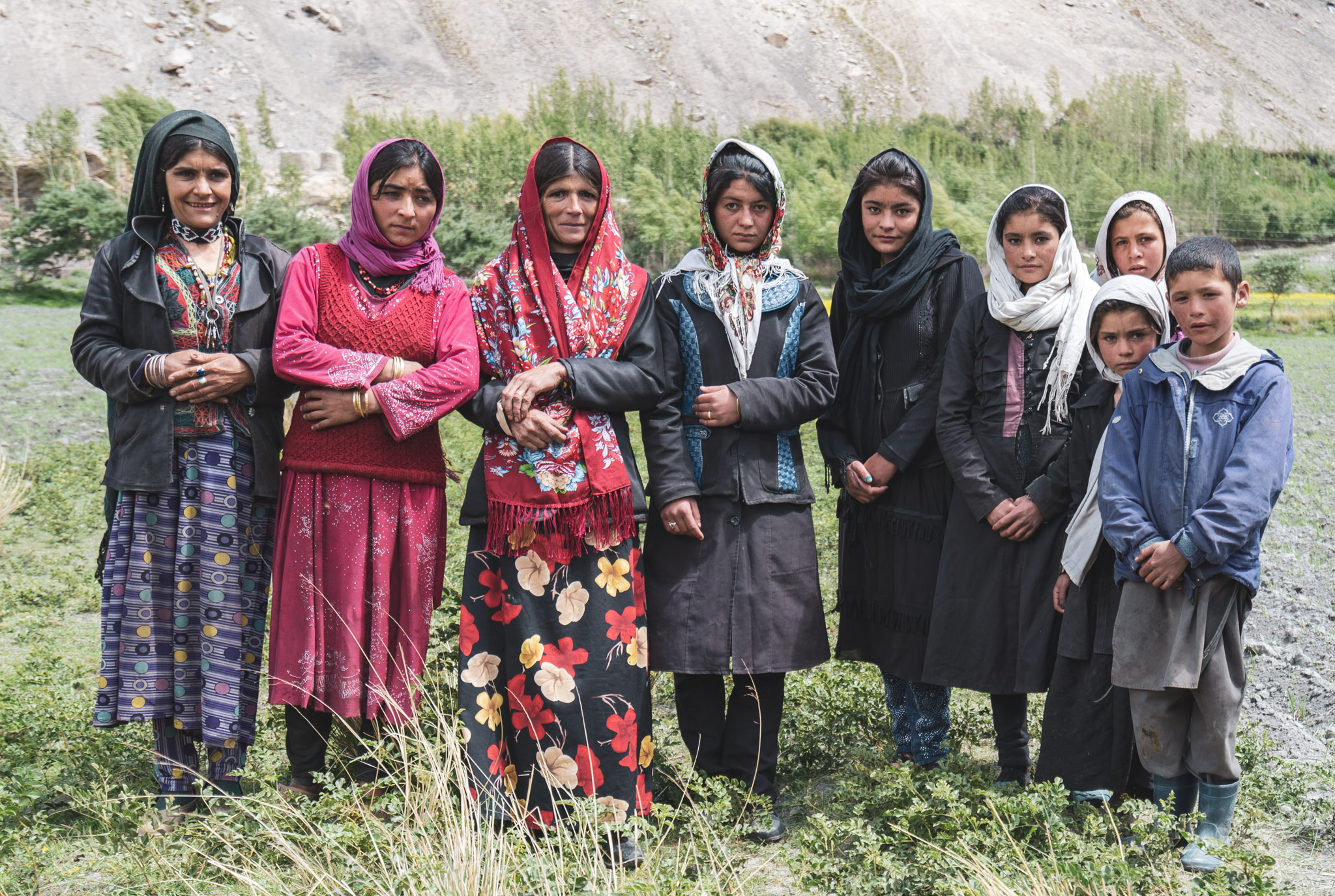
Wakhan Corridor Budget
You’ve probably read that visiting the Wakhan Corridor is expensive. I’m happy to report that this isn’t necessarily the case.
If you pay $300 each way for tourist transport to/from Sarhad-e-Broghil, hire an Ishkashim guide for $50 per day, and take a few horses along to carry your bags, then yes, it will be expensive.
During my two weeks in Afghanistan, I spent a bit under $400. I could’ve done it for cheaper, had I not hired an Ishkashim guide to help me with permits. ($400 not including the $130 for my Afghan visa in Islamabad, Pakistan)
Here are a few sample costs to help you calculate a budget for your trip:
- Guesthouses in Wakhi villages – $20-$25 per night (including food)
- Kyrgyz guesthouses in the Little Pamir – $5-10 per night
- Afghan Visa – From $100 to $220 depending on nationality
- Taxi from the Afghan border to Ishkashim bazaar – $10
- Permits – Free (or $50 if you pay for help)
- Tourist transport – $300 one-way from Ishkashim to Sarhad-e-Broghil
- Local shared cars – $35-$60 one-way from Ishkashim to Sarhad-e-Broghil
- Donkey – 500A ($6.20) per day, including owner
- Horse – 1000A ($12.40) per day, including owner
- Guide – $20 to $50 per day, Wakhi guides are cheaper than Ishkashim guides
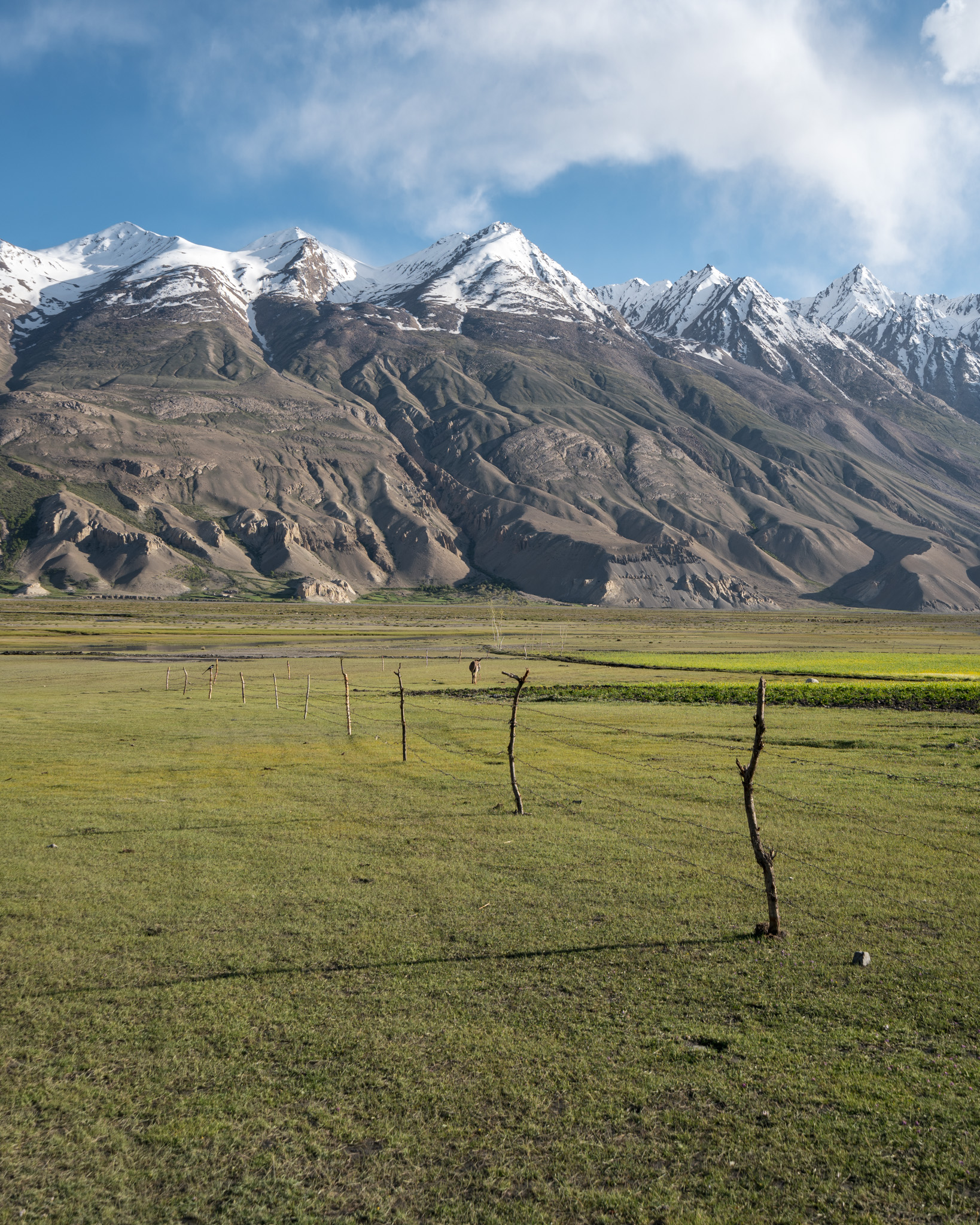
What to bring to the Wakhan Corridor
You should be properly prepared with warm clothes and camping equipment if you plan on going trekking. Even during summer, it can snow in the Little Pamir. Here are a few things that I highly recommend bringing with you to the Wakhan Corridor:
- A form of water purification. I recommend either purification tablets or a filter such as the Sawyer Mini.
- Sun protection. At high altitude, the sun is extremely strong. Bring a good hat and some strong sunscreen.
- Pens and notebooks, if you can. Almost every kid in Sarhad-e-Broghil was asking me for these, but unfortunately, I didn’t have any with me.
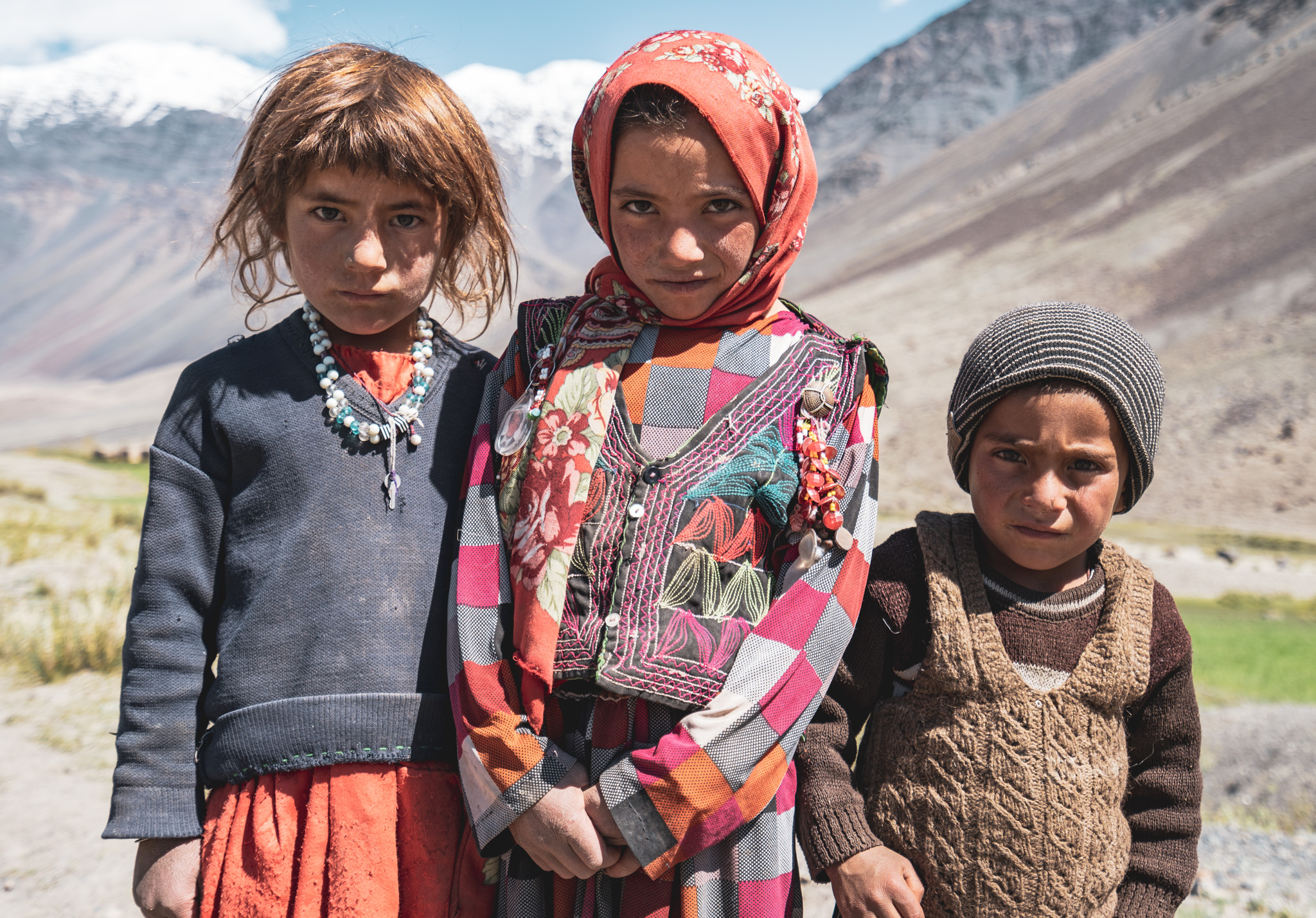
Languages of the Wakhan Corridor
I’ll start by saying that you better be comfortable having a lot of conversations with hand gestures and a phrasebook if you plan on visiting the Wakhan Corridor.
English is basically non-existent outside of the larger Wakhi towns such as Ishkashim, Khandood, Qala-e-Panja, and Sarhad-e-Broghil. Fortunately, each of these places have a few English speakers, and they’re typically the ones who own the guesthouses.
Wakhi people are usually able to speak Dari (Afghan Farsi), and Wakhi. The Kyrgyz men in the Little Pamir can speak Dari and Kyrgyz, and the Kyrgyz women can only speak Kyrgyz.
Without a proper guide, you won’t be able to have deep conversations with most people in the Wakhan Corridor. Consider learning some Dari and/or Kyrgyz before going. Russian is basically useless here (at least from what I saw).
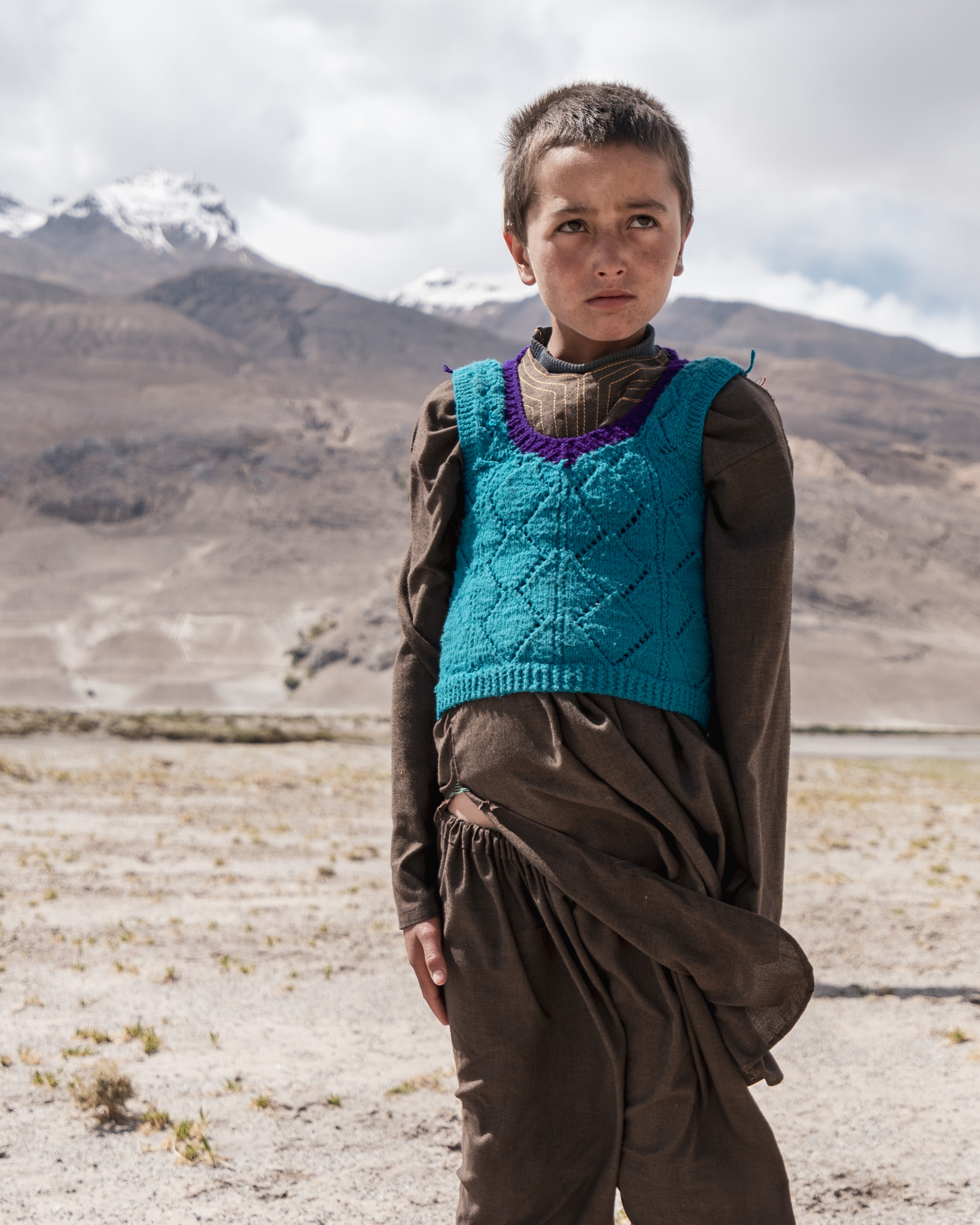
Wakhan Corridor Tours
There are a couple of tour companies running tours to the Wakhan Corridor if you’d rather not do it alone.
- Let’s Be Friends Afghanistan – Led by Noor, Let’s Be Friends Afghanistan is a local tour company that runs a number of yearly tours to different destinations in Afghanistan. I’ve met Noor in real life, and he’s a great guy. I recommend him if you’re looking to visit the Wakhan Corridor on a tour.
- Secret Compass – These guys have been running tours to the Wakhan for a while and they seem to come pretty well recommended. They’re a foreign company, but I assume they work with some Afghan contacts.
Books to read before you go
Here are a few books I recommend you pick up and read before your trip to the Wakhan Corridor:
- The Great Game by Peter Hopkirk – An incredible account of the struggle between the British and Russian Empires for control in Central Asia. The conflict between the two empires is the reason that the Wakhan Corridor even exists, and the book talks about the area in detail. I highly recommend this book for anyone planning to visit Central Asia.
- Trekking in Tajikistan – Mostly covers trekking routes in Tajikistan, but also has a chapter on the trek to Chaqmaqtin Lake. I used the maps and descriptions given in this book a lot while I was on my trek.
- Lonely Planet Farsi Phrasebook – The common tongue in Afghanistan is Dari, which is a variety of Farsi. A Farsi phrasebook will help you out a ton with communication in the Wakhan Corridor.
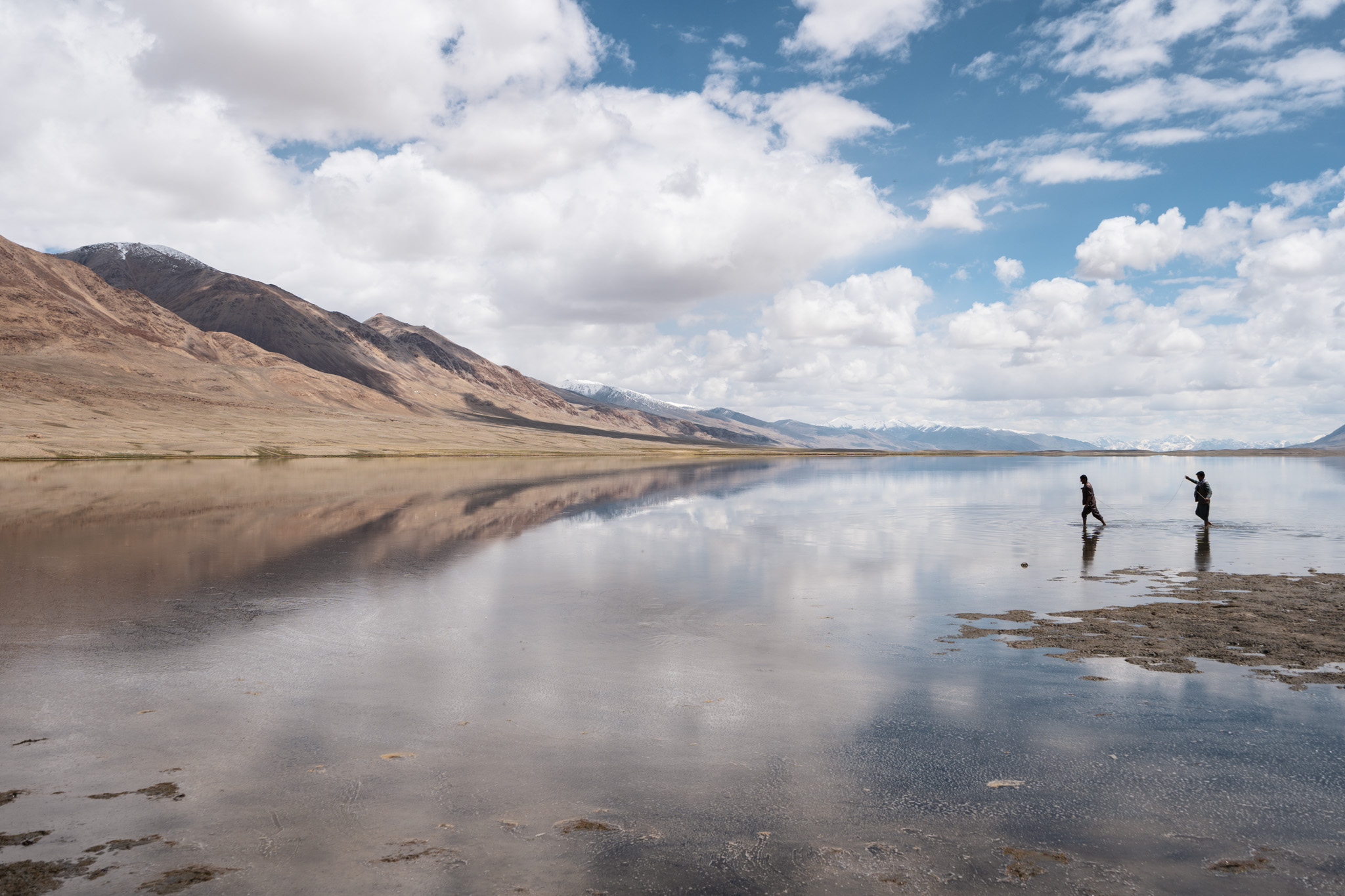
Other Wakhan Corridor Resources
I did a ton of research before visiting the Wakhan Corridor, and I’m sure you’re doing the same thing. Here are a few of the things I found most useful:
- Juldu.com (great trekking route info)
- Aga Khan Foundation Wakhan Corridor Brochure
- Solo female Wakhan Corridor trip report (helped me out a ton, thanks Marsha!)
- Caravanistan’s Wakhan Corridor Guide
Wrap-up
I hope this post has been useful! Planning a trip to Afghanistan isn’t easy, so props for even considering it! Feel free to ask any questions that you may have.
Want to read more about travel in Afghanistan? Check out my other posts:
- Travel in Afghanistan: The Ultimate Backpacker’s Guide
- 35 Beautiful Photos Of Afghanistan
- Bamiyan Travel Guide: Everything You Need To Know
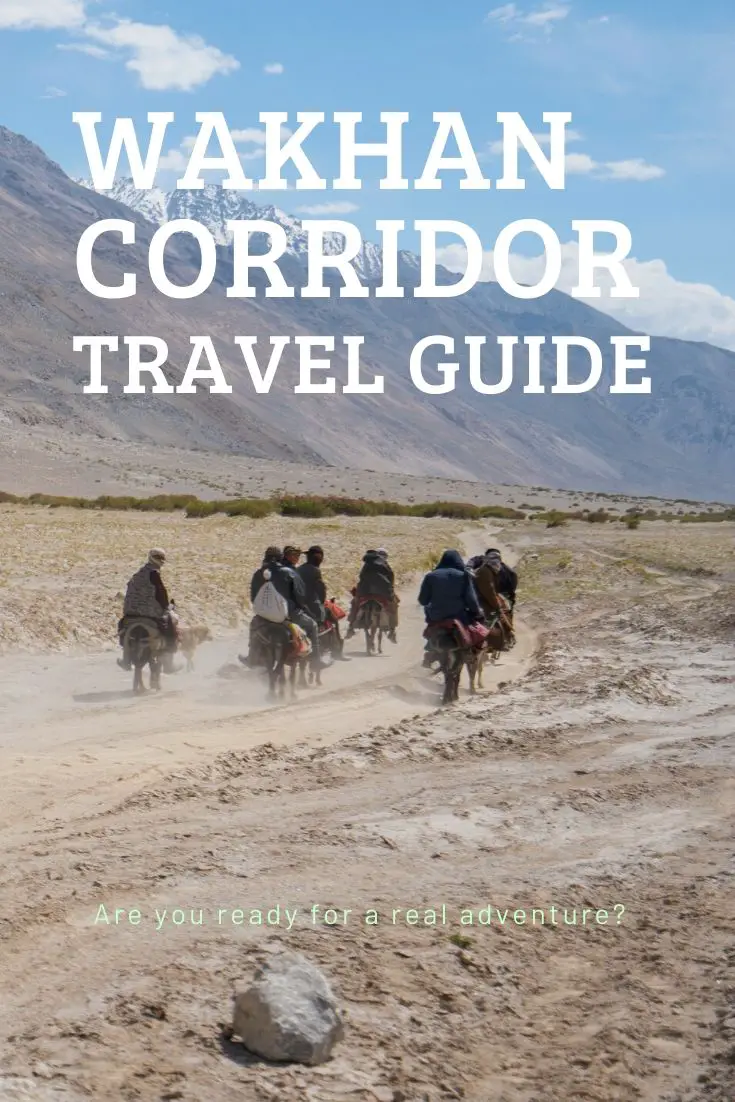
Yay transparency! There are affiliate links in this guide. If you book or buy something using my links, I’ll make a bit of money at no extra cost to you.
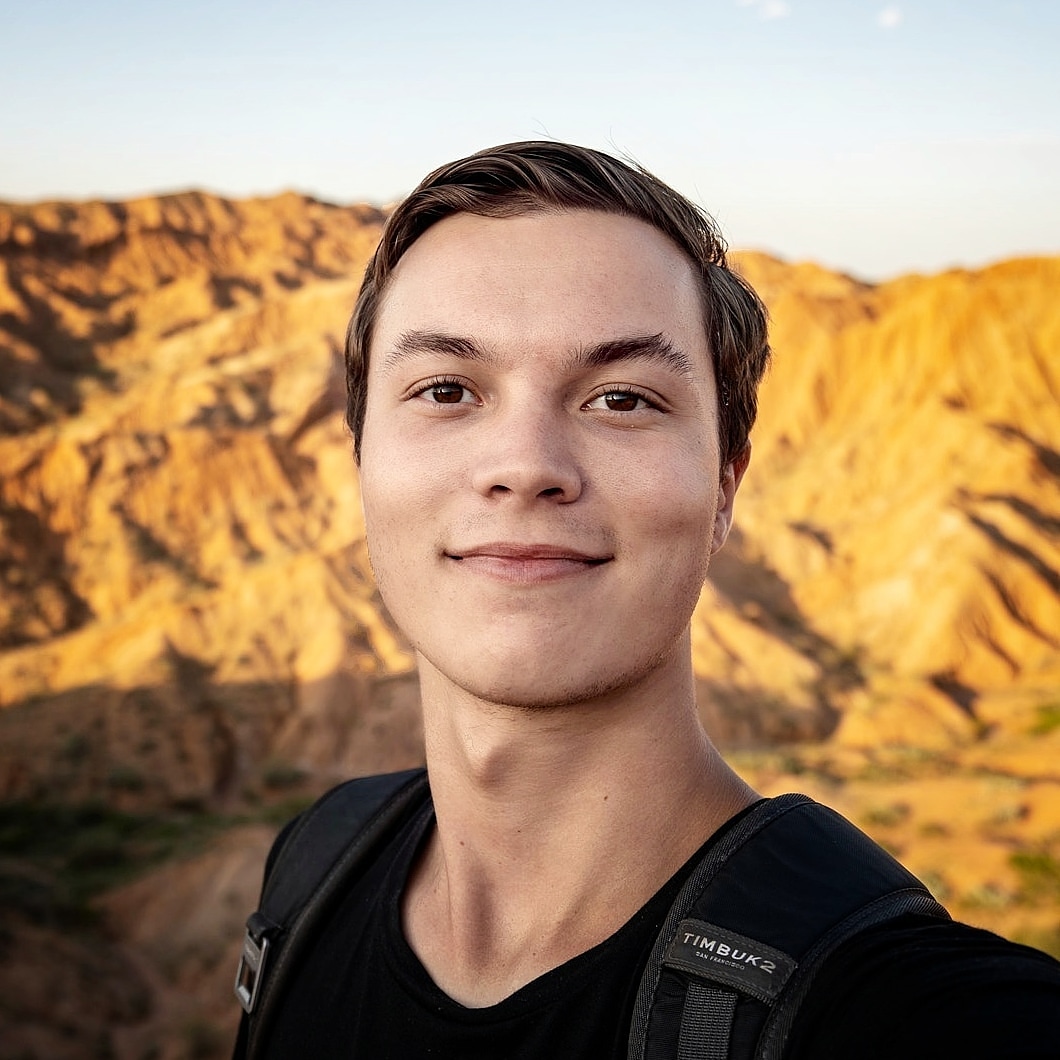
21-year old Canadian dude who loves to visit off-the-beaten-path places, climb tall mountains, and try delicious foods.
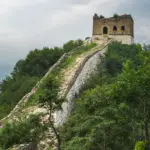


I can’t believe the thoroughness and readability that you offer in your travel posts. I’m planning a trip through some of the Amdo and Kham regions of China this autumn with a winter journey following the southern slopes of the Himalaya towards Pakistan and onward into Central-Asia during the 2020 summer. I’m sure your posts will be a valuable resource for the visa-hoops to jump through and up-to-date information on trekking. Excellent site, I’ve been travelling for over a decade and this is one of the more interesting travel blogs I have found. Thanks for sharing!
Thanks Simon, I’m super happy to hear that you like my site! 🙂
Your plan sounds amazing – I’m working on writing some stuff about Pakistan right now, should be out soon! I’m currently in Bishkek, Kyrgyzstan, and am gonna be travelling in Central Asia until mid-autumn. After that, hopefully Iran and Kurdistan!
Safe travels, maybe we’ll run into each other somewhere along the way – we seem to have similar taste in destinations!
Update: My Pakistan guide is out! Check it out here.
Interesting report! A bit sad that you did not seem to think Caravanistan was a useful resource in your trip planning… I kind of got the feeling you did take a thing or two from our guide 🙂
Thanks Steven! My bad – I completely forgot about your detailed guide while I was going through forum trip reports 😢
It was super helpful in planning my trip – I added a link to it in the post 🙂
Thanks! Yours is very good too, I linked you back from the trip reports.
Pictures are just amazing.
Looks on the persons face, wow, they are staring right at you.
May I ask which languages do you speak?
Thanks a lot 🙂
I speak just English and some French. Communication is difficult in remote places like the Wakhan, but there are usually a few people in each Wakhi village who can speak some English.
Knowing Dari and/or Kyrgyz would be a huge help, and would allow you to have much deeper interactions with people.
Thanks Jacob for the useful info … It will help me a lot for my trip this summer. Can you provide me with the contacts of the local Wake guides please.
Glad to know that the info here has helped!
I’ve managed to find Ibrahim Hamdard’s WhatsApp and added it to this post.
Here it is for your convenience: +93749229030
My namis ibrahim my last namis hamdard i am a guide in the wakhan pamir bag and samal pamir.
Dear Ibrahim
Can you send me your WhatsApp contact to [email protected]
Hey Ibrahim, I added your WhatsApp details to the post. Hope to meet you next time I’m in the Wakhan!
I ‘m ibrahim last nam hamdard i am a guide in the wakhan ….
Thanks Dear: i always available in the wakhan for touriests .
Thank you very much dear Jacob,
I hope we can visit each other in the Afghanistan wakhan corridor again.
I’m very appreciate who posted my WhatsApp number on the page
Thanks.
Did you get a second Afghan visa for when you went to the mainland? If so how did you do so?
Yeah, I did get a second one for my visit to the mainland.
I got my second Afghan visa in Bishkek – it was pretty easy as of August 2019. That reminds me, I should get around to writing a guide to getting Afghan visas 🙂
Thank you very much for everything you write about Afghanistan. I dream to visit this interesting country one day. You are a young dude and have traveled too much and have important experiences to share. Thank you so much Jacob. I am brazilian.
It’s my pleasure!
I hope you get to see Afghanistan yourself sometime soon. It’ll be an unforgettable experience.
Safe travels 🙂
Hi Jacob,
Thanks so much for your really detailed report. I was wondering is the lower route to Lake Chaqmaqtin less difficult than the high route? I’d love to do this trek but not sure if I am up to the climb. Thanks Jo
Hey Jo,
The lower route to Chaqmaqtin is definitely less difficult than the high route. The high route goes over two passes extra before arriving in the Little Pamir, whereas the low route is the most direct route possible.
The most challenging day on the low route is the first day where you climb over Daliz Pass (this day is the same on the high route). As long as you start early to give yourself enough time, it’s fairly straightforward to cross the pass. Hiring pack animals will make it easier for you.
I wouldn’t recommend doing the high route on the way to Chaqmaqtin – the altitude gain is a bit risky in my opinion, and the Wakhan Corridor is no place to get altitude sickness. If you want to do both routes, consider returning to Sarhad via the high route instead.
Hope this helps!
Thanks for your reply Jacob.
Is the high route more picturesque than the lower route?
With the lower route do you need to still acclimatize to the altitude before starting it?
Where are the best Kyrgyz camps? Are they around the lake or Bozai Gumbaz? I’m a photographer and would like to spend some time photographing.
Thanks again for your great report and for replying.
Both routes are very beautiful, although I believe that the high route offers more views of high peaks if that’s what you are looking for! The low route follows the floor of a valley up until you reach the Little Pamir.
You should do some acclimatization beforehand even with the low route, as it’s a pretty high elevation on the first day (over 4,000 meters). Just spending an extra night in Sarhad beforehand will definitely help.
The best camps will be around the lake – Bozai Gumbaz is more of a permanent settlement and is a bit weird, to be honest. People weren’t that friendly. You’ll have much better luck going from village to village around the lake!
Sorry for the late reply! Hope this helps 🙂
Thanks for your reply Jacob. Much appreciated. Sorry for the late reply. Sounds like you are ultra fit. I’m not sure if I could do it so quickly I guess you can take as long as you like over it?
Also were there any Kyrgyz camps at Noshaq Base Camp?
You blog is so helpful and I’m very tempted to do the lake walk. Thanks, Jo
Dude! your information is great and very much helpful. You really raised my ambitions to visit the Wakhan Corridor. Thanks
I’m super glad it’s made you want to visit!
Feel free to get in touch with me if you have any questions 🙂
Superb! report Jacob dude. I am a wakhi speaker from North Pakistan, I love your travel blog, I am glad you have visited upper Hunza. I am from Shimshal valley I wish if you could visit there too. I really want to travel to Wakhan corridor but so far yet I couldn’t find any partner. I want someone to give me a company, on Wakhan trip. I would love if you have plan to visit wakhan once again, I would really like to join you. I am a student and looking for a partner to visit Wakhan corridor, Interested dudes can write me here, thanks
Thanks man! That’s incredible, Wakhi is such an interesting language I’d love to learn more.
I’ve heard amazing things about Shimshal, I would love to visit! I’m hoping to get back to Pakistan sometime soon, it’d be fantastic if we could meet when I’m there!
Feel free to message me on Instagram, @jacoblab1 🙂
Hi Jacob,
I am an Afghan and Canadian citizen, I am glad you had a great time at Wakhan. It’s my dream place to visit. Thanks for the info in your blog. Let me know if you are in Ottawa, I can invite you to my home for an Afghani Dinner and Chat.
Hi Hameed! I’m actually from Ottawa, and am here right now – it would be great to connect 🙂
I will send you an email
Hello dear Jacob.
Thank you so much my friend.
Inshallah I hope we can visit each other soon in Afghanistan wakhan corridor, yes I am using 2 WhatsApp number +93749229030_+93749643288.
And, emial [email protected]
Thank you again my friend.